26 conservatory ideas to add space and improve your outdoor connection
Choose your conservatory ideas well and you can turn your spare outdoor space into a comfortable, stylish and practical room you can use all-year-round
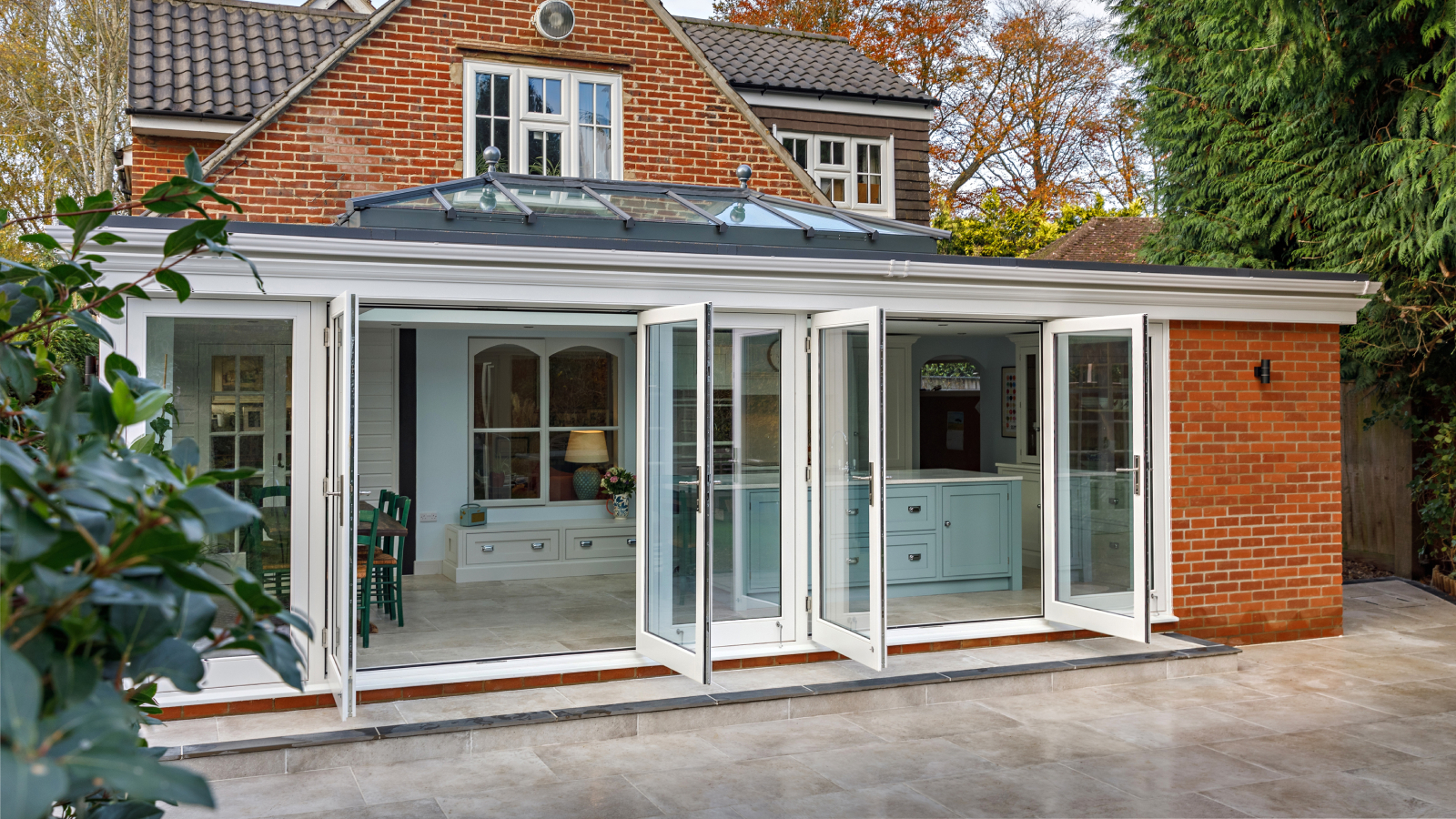
Having long shaken off their reputation for being cold and draughty or excessively hot white uPVC boxes, the vast array of conservatory ideas now available give you the option to add space, improve the overall look of your home and enhance your relationship with the outdoors.
However, although a conservatory is normally defined by the way it's built – with at least two thirds of the room's roof and a minimum of 50% of the walls needing to be glass – it's not uncommon to see orangeries and sunrooms also fall into the category of conservatory.
And although orangeries generally feature a flat or mansard roof with a glazed lantern for extra light, while sunrooms often have a solid roof and large panels of glazing, the ideas associated with all three concepts can be generally carried from project to project. What can change is how the final design impacts building regulations and planning permission.
But, whether you choose an off-the-shelf traditional option or a fully bespoke design, the conservatory idea you choose should be based on your budget as well as the style of your home. With that in mind, here's a selection of 26 conservatory ideas to help get you started.
1. Elevate your conservatory with a stepped entrance
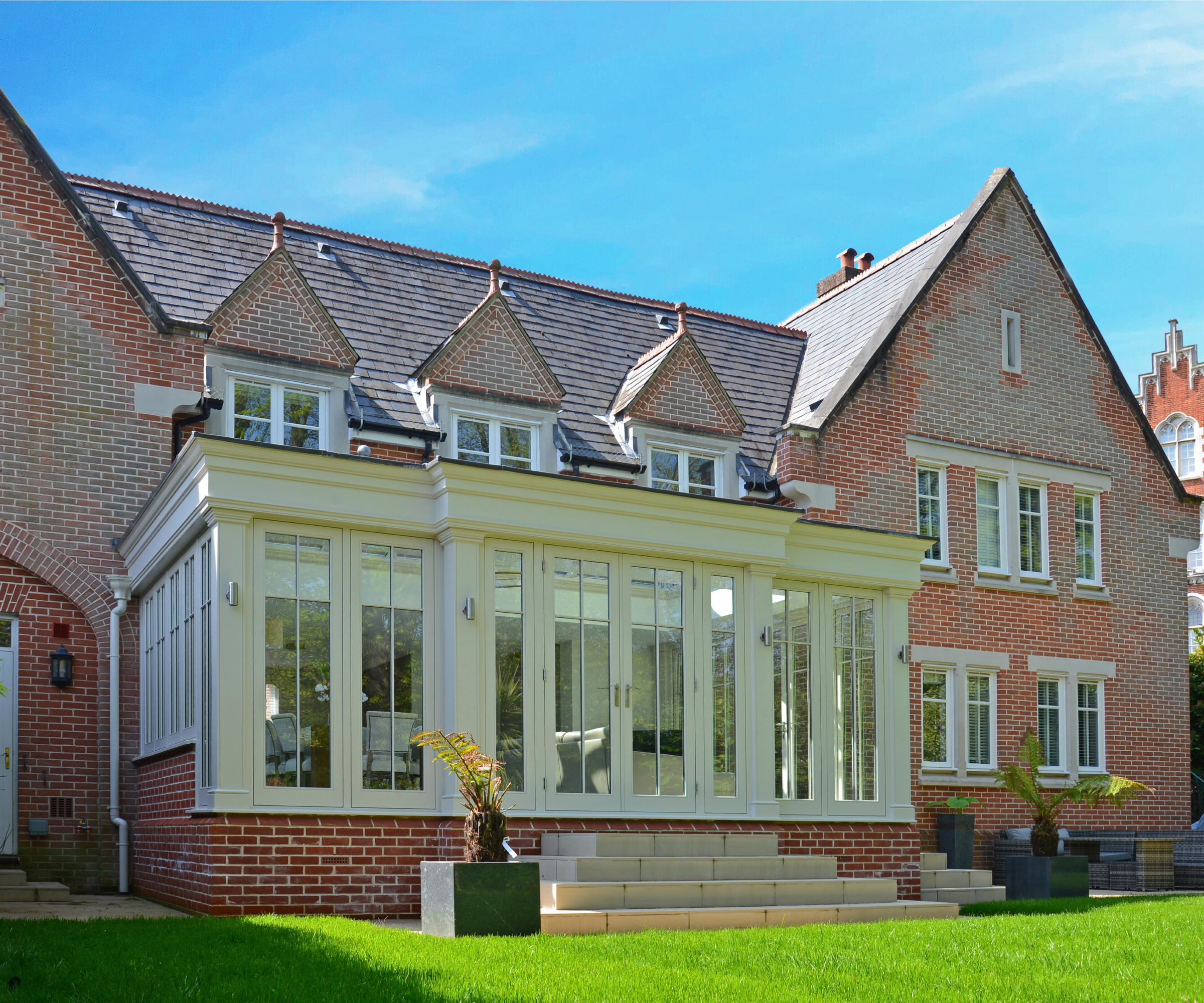
Although it's entirely possible for your conservatory ideas to lead directly onto a patio or garden, elevating the floor level of this orangery conservatory and adding steps either side helps to give it an extra feeling of elegance and solidity. It also makes it feel very much part of the home, rather than an add-on.
Getting the design right early on is one of the crucial steps to making your conservatory ideas a success, and the feeling of making it an integrated space is a growing trend, says Karen Bell, sales and marketing director at David Salisbury.
"Designing bespoke, integrated living spaces is the key requirements nowadays as opposed to thinking about standalone conservatories," she explains. "Customers are opting for open-plan conservatories or orangeries that seamlessly blend with their homes, creating a natural flow between kitchen, dining, and garden areas."

In her role as sales and marketing director at David Salisbury, Karen has amassed a wealth of conservatory knowledge to help her guide customers towards the right choice for their home.
2. Add a kitchen conservatory extension to your home
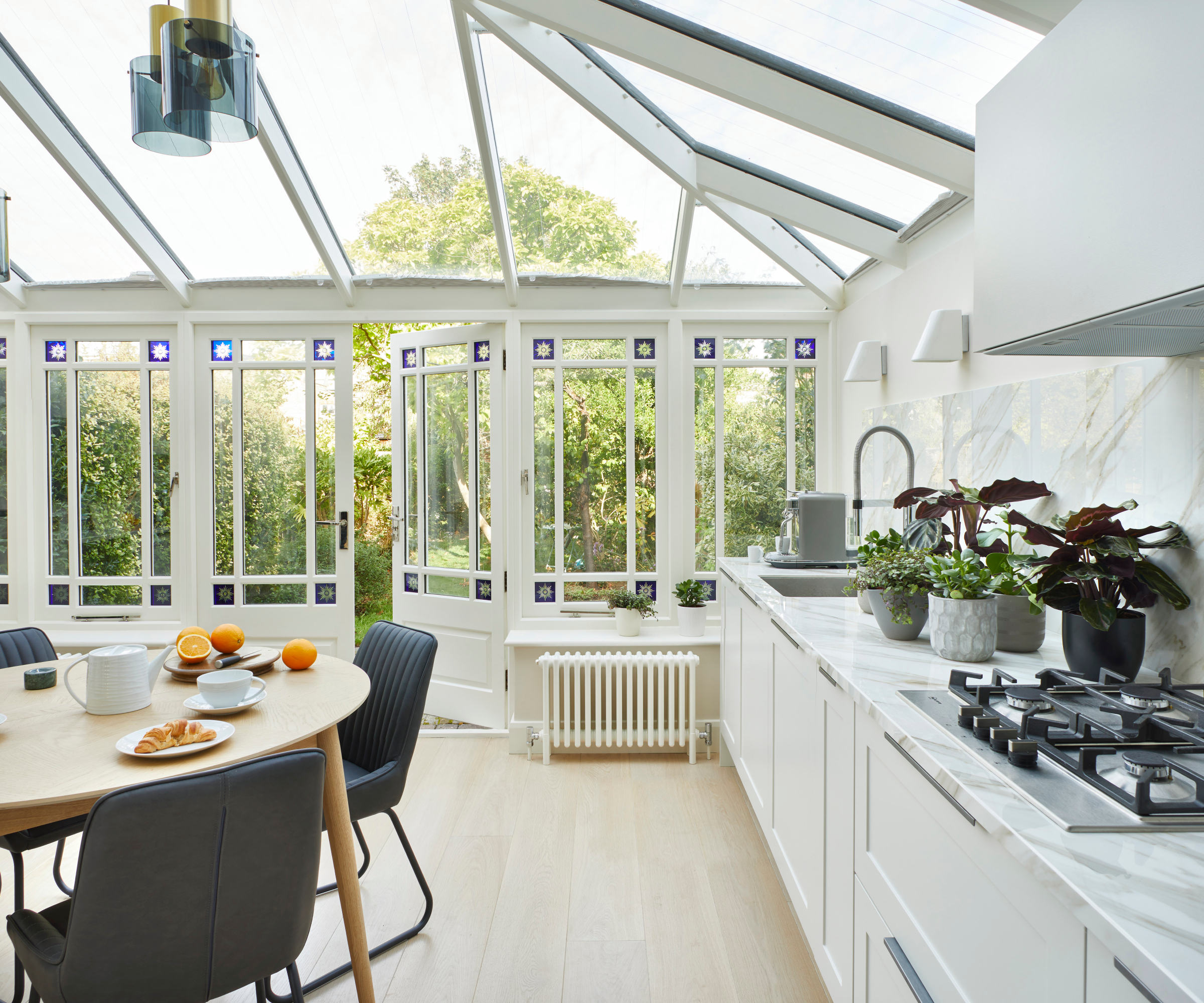
As well as finding a style of conservatory that you feel does justice to your existing home, you should also think through what you will use the new space for as this will have an impact on the sizes and designs that will best suit your needs – kitchen conservatory extensions, for example, need a different approach to those that will be used as living space.
"Considering the functionality of the room at design stage is paramount – traditional uses for a conservatory include a living room or dining room but they have evolved in recent years to include creating space for a larger kitchen extension," says Karen Bell.
If you're keen to create a social space, with garden views – perfect for cooking and entertaining come rain or shine, there's no doubt that kitchen conservatory ideas are for you.
3. Use bifold or sliding doors for a modern finish
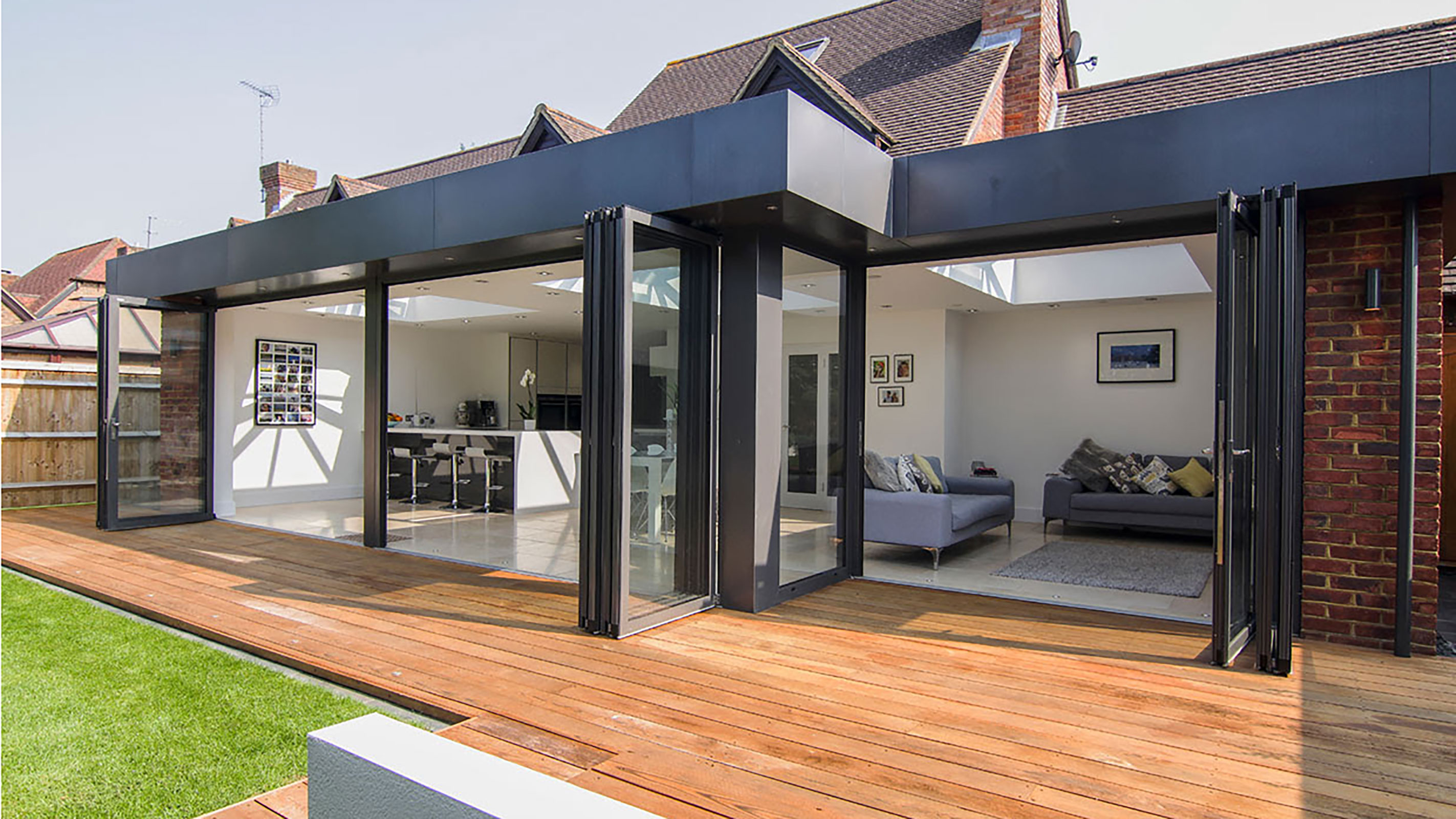
While traditional conservatories often tend to feature French doors that lead out into the garden beyond, for more modern conservatory ideas, there are plenty of options available to you.
Large bifold or sliding doors are a great way to bring light and also work well for those trying to decide between an extension or conservatory, as they allow the entire new space to be completely opened up to the outdoors fully connected to the garden.
Here, bifold doors from Thames Valley Window Company have been used, along with a smart level threshold, to create a seamless transition between inside and out.
4. Or, match your windows and conservatory style for a stylish connection
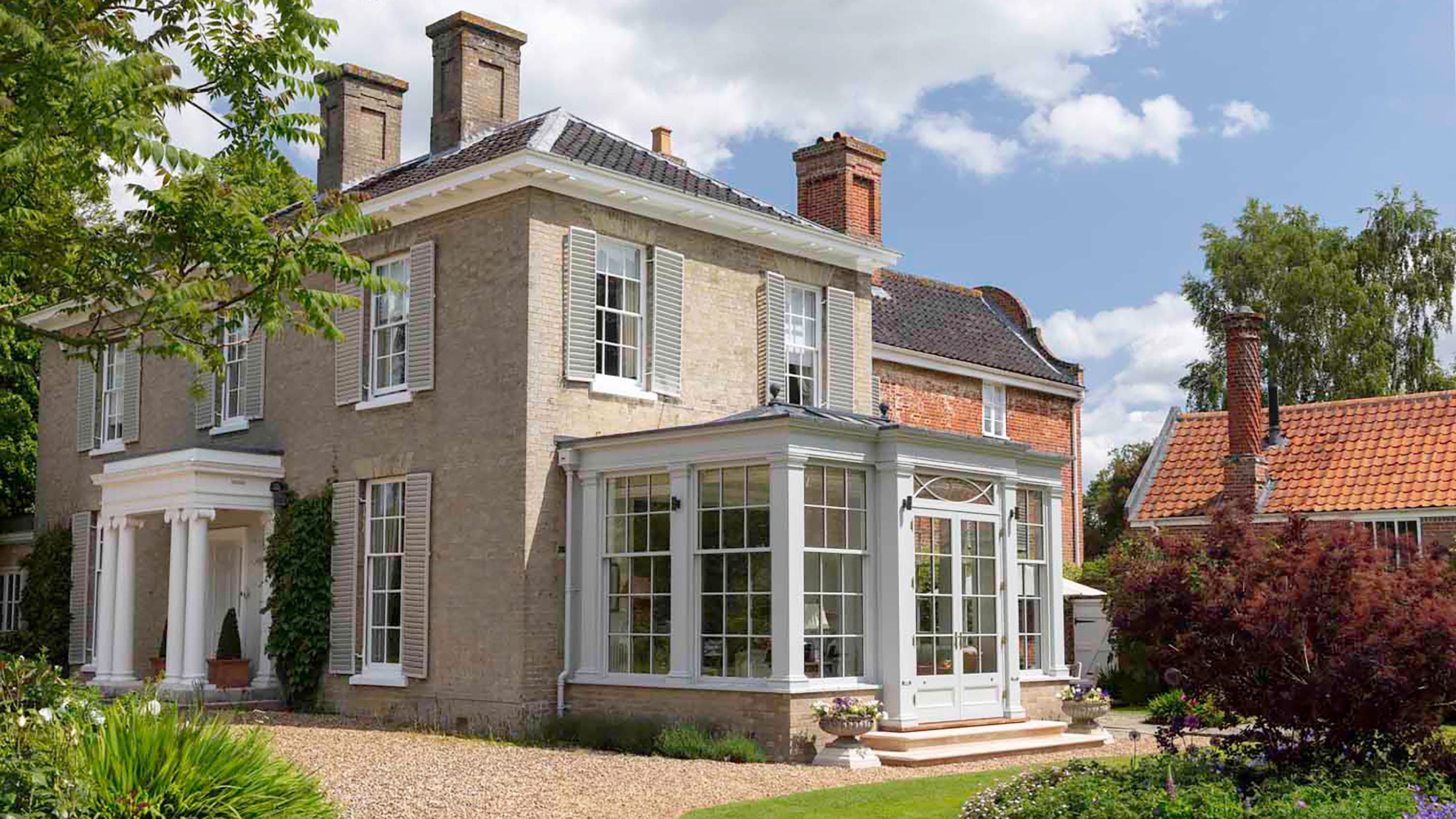
It is particularly important when adding a conservatory to a classic or period property that it really enhances and complements the original details of the house – particularly the windows, as well as the house cladding materials. It is also crucial that it sits in proportion to the building and doesn't overshadow it in any way. In addition, it helps if its design in some way mirrors the form of the house. Although many owners of period homes grapple with the idea of orangery vs conservatory, the latter really can work well.
This design, from Vale Garden Houses, is a great example of how, with the right care and attention, a conservatory can work brilliantly with any style of home. The beautiful Georgian house it has been added to features pale brickwork and stunning, elegant sash windows – both of which have been reflected in the design of the new structure so that they work in perfect harmony.
5. Trick the eye with conservatory flooring that looks like carpet
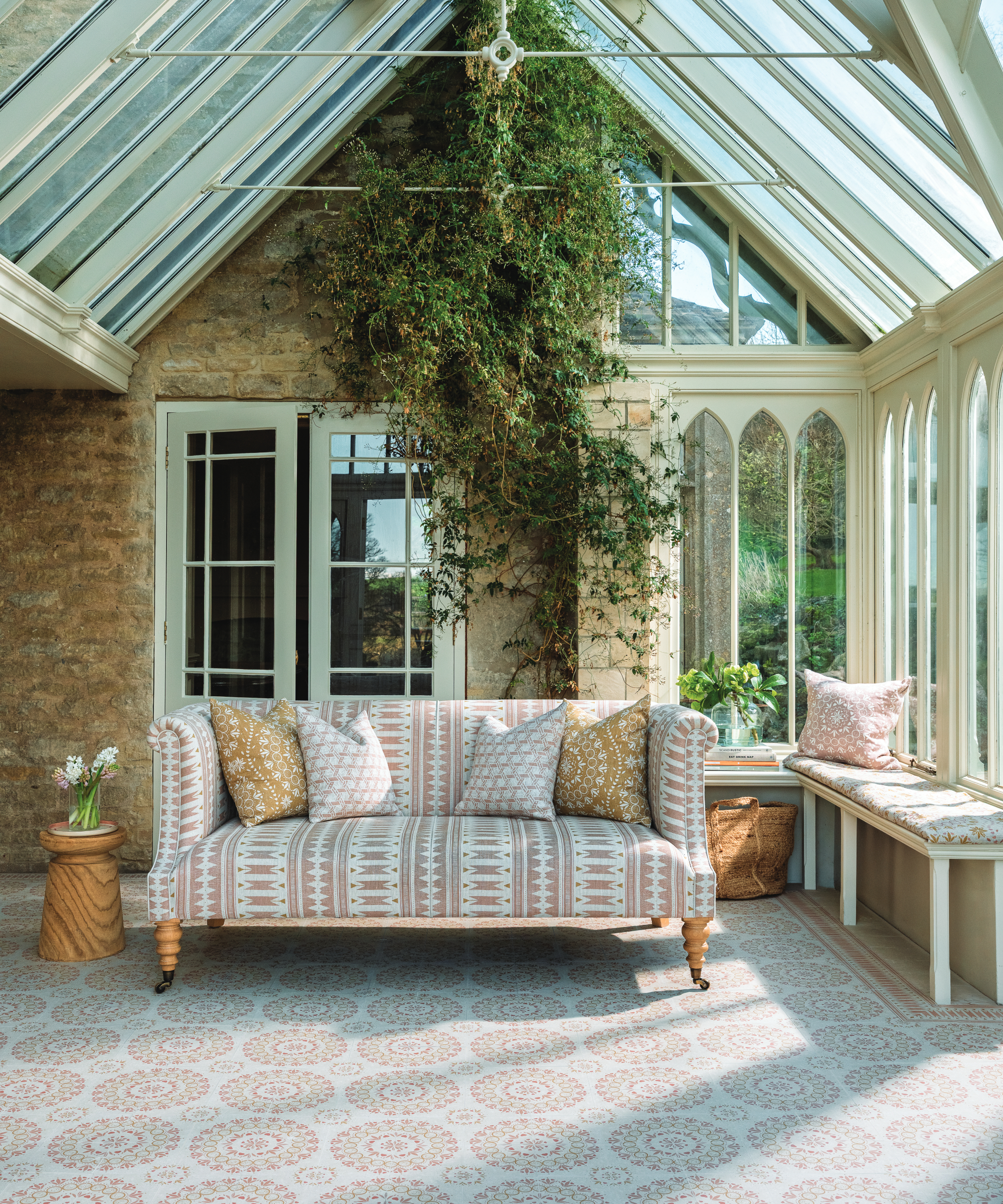
If your conservatory ideas need to provide somewhere to rest and relax, hard tiled conservatory flooring can sometimes feel less welcoming. Nonetheless, with the indoor/outdoor transition, opting for a hard surface flooring is infinitely more practical than soft.
But, instead of opting for traditional flagstones or tiles, pick a design that brings warmth and style too and take inspiration from warmer climes, says interior designer consultant for 247 Blinds, Amy Wilson.
“There is a lot we can learn from the style of those living in sunnier climates that translates into conservatory design. Mediterranean style often features warm, earthy tones including shades of terracotta, ochre, sandy beige, and azure blue.
"Rugs, upholstered furniture and feature walls are all brilliant ways to pull these colours together in a luxurious way," suggests Amy.
Try these Ca'Pietra Sardinia Porcelain Masseria tiles from Hyperion Tiles for a touch of the mediterranean in your conservatory ideas.

Amy Wilson is a renowned Yorkshire-based interior designer and past contestant in BBC2’s reality competition series, Interior Design Masters. Her core belief is that good design should make you feel joyful, inspired & safe. In addition to her own interior projects, she serves as the in-house interior design expert at the window dressings brand 247 Blinds.
6. A small conservatory can still have a big impact
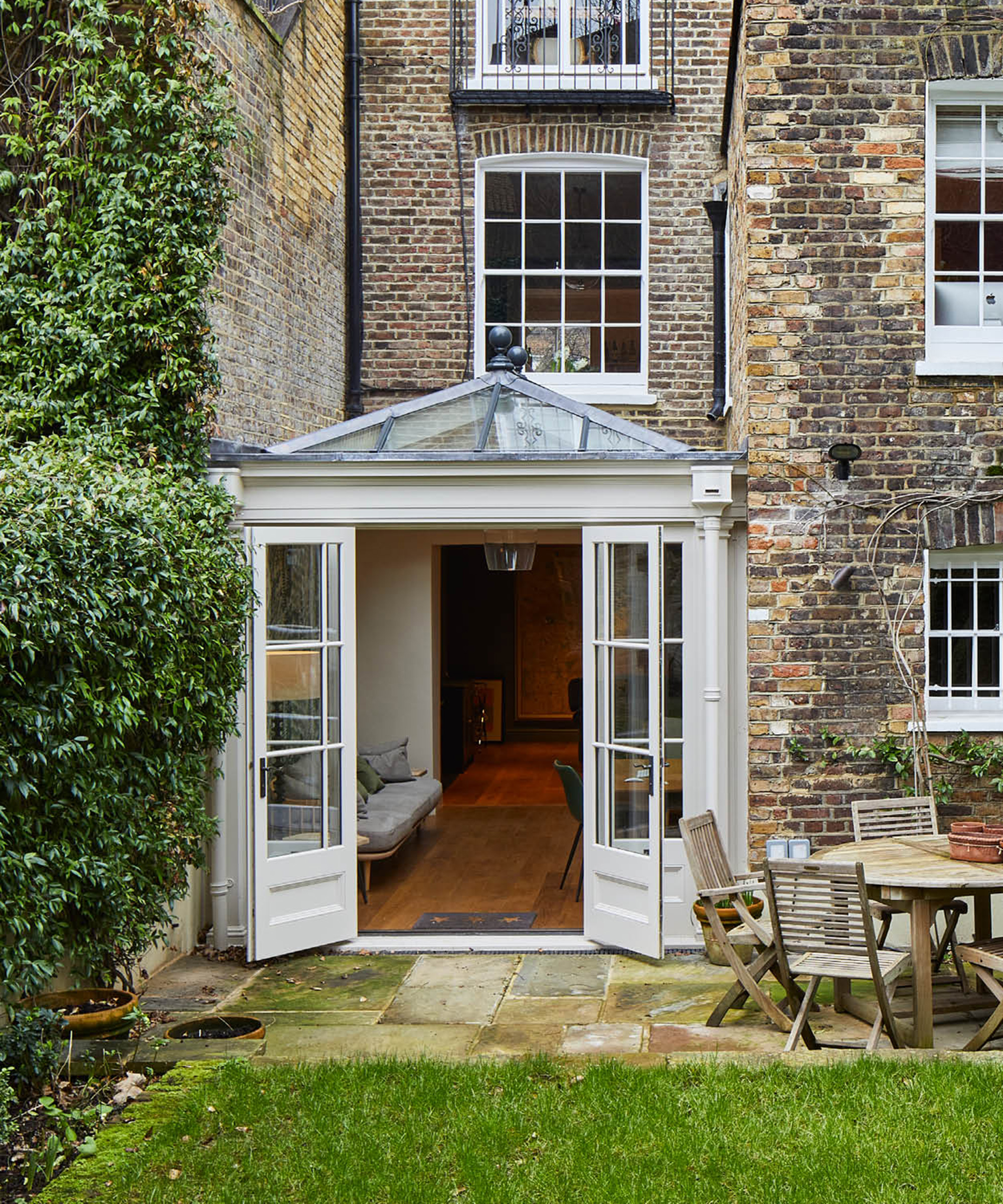
Light is the best way to open up a small space, which is why small conservatory ideas often appear more spacious than they are and can sometimes work better than building an extension.
A smaller conservatory cost will also be lower than a traditional brick-and-block extension and will come with a fraction of the disruption and disturbance.
Small designs work well with terraced homes and cottages, but it is best to give them a purpose. They make the perfect light-filled hobby room, a spot for reading or even a home office design.
7. Create a seamless transition between conservatory and garden
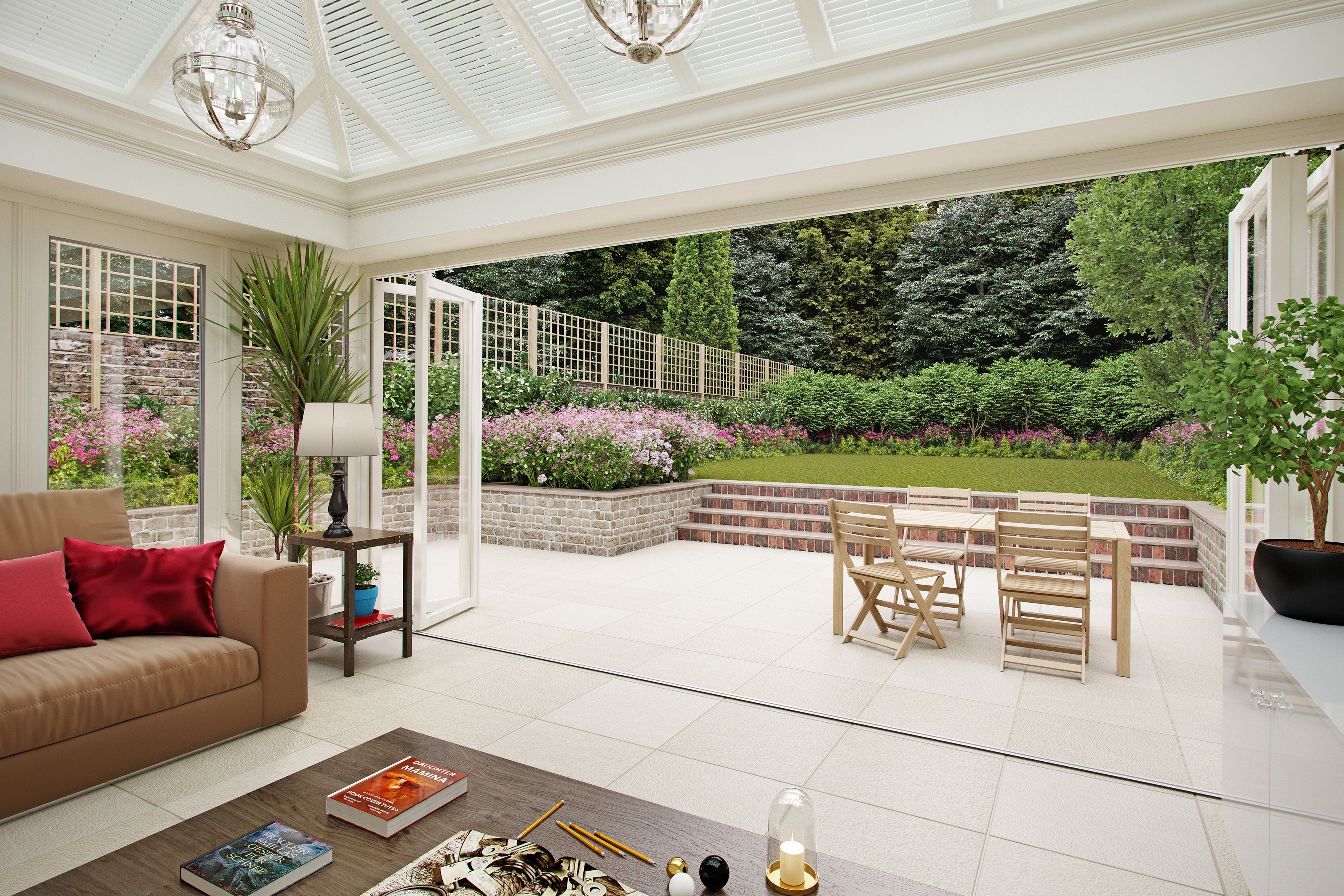
One of the biggest draws of adding a new conservatory or upgrading an existing one is the instant link it forms between the house and the outdoor spaces.
Here, matching indoor and outdoor porcelain floor tiles means that when the patio doors are opened, the boundaries are blurred and the space feels beautifully light and open. Conservatory flooring ideas should be practical as well as aesthetically pleasing, so make sure you choose a finish that is durable and ready to take on heavy footfall.
Porcelain and stone tiles are great options for spaces with a lot of through-traffic as they're quick and easy to clean – plus they can be matched with exterior anti-slip options for a seamless transition onto the patio.
LVT and laminate options are also a smart choice for conservatories as they're more cost-effective, easy to maintain and can come in a range of styles.
8. A light-filled lean to conservatory is a timeless classic
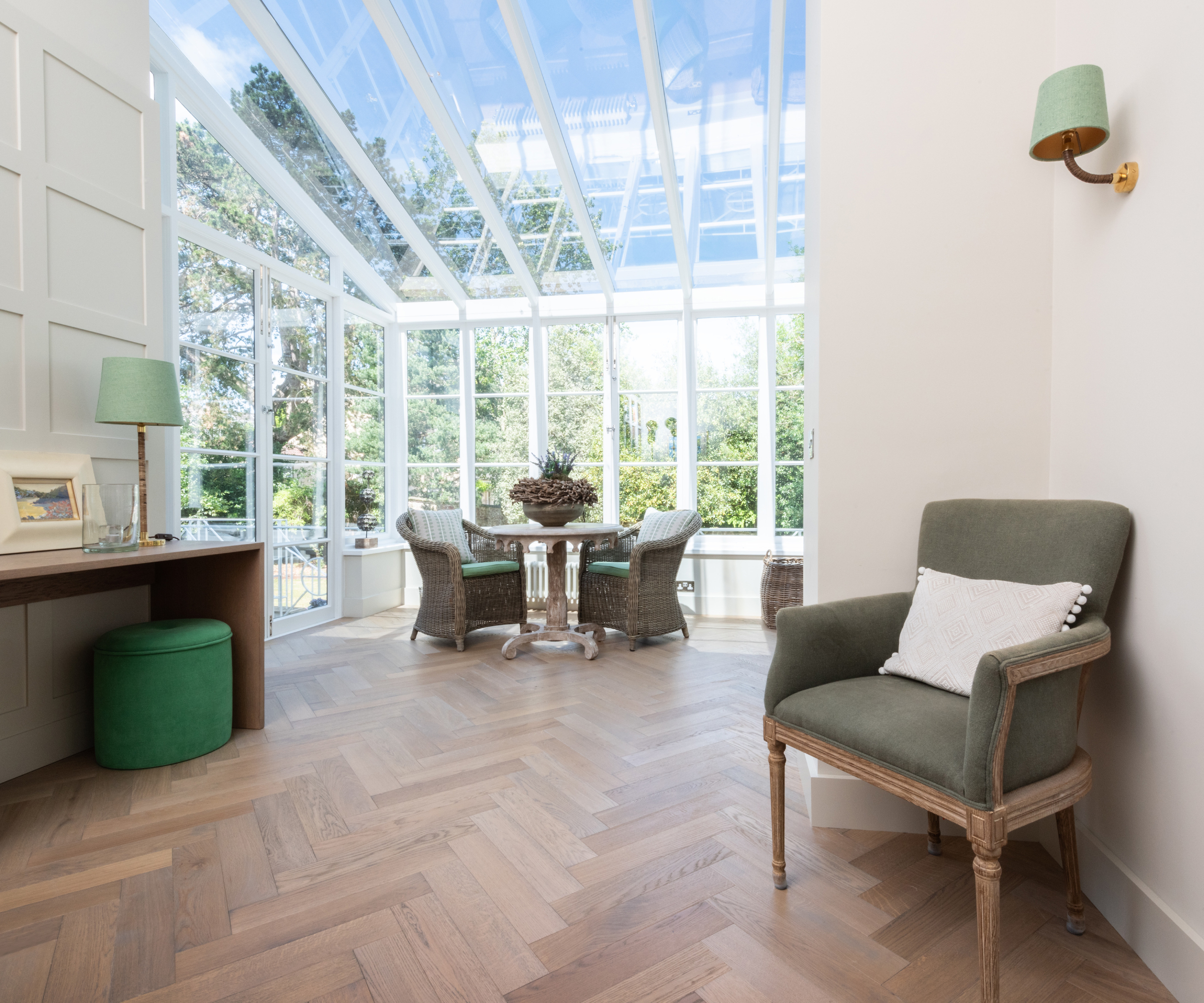
Lean to extensions are a really popular option when it comes to adding space to all kinds of houses. They tend to offer simple, clean lines, are cost effective to construct and can add useful space and considerable value to a home.
Lean to conservatories are perfect for all kinds of houses and can be as big or small as suits you – they are also a great option for those looking for a simple way to extend their existing spaces and bring in light. Rather than have a door leading into the conservatory, many people choose to remove the rear external wall entirely to link the two spaces – something that will require the input of a structural engineer.
This style of structure often makes conservatory planning permission far more straightforward. "If extending a listed property, a lean to style conservatory is most likely to be looked on favourably by planners," explains Karen Bell.
"In addition, a lean to conservatory can be designed to wrap around a corner of a property, extending dual aspects of the home. This is particularly attractive if outside space allows it and there are different views to be enjoyed."
9. Consider adding an orangery in period properties
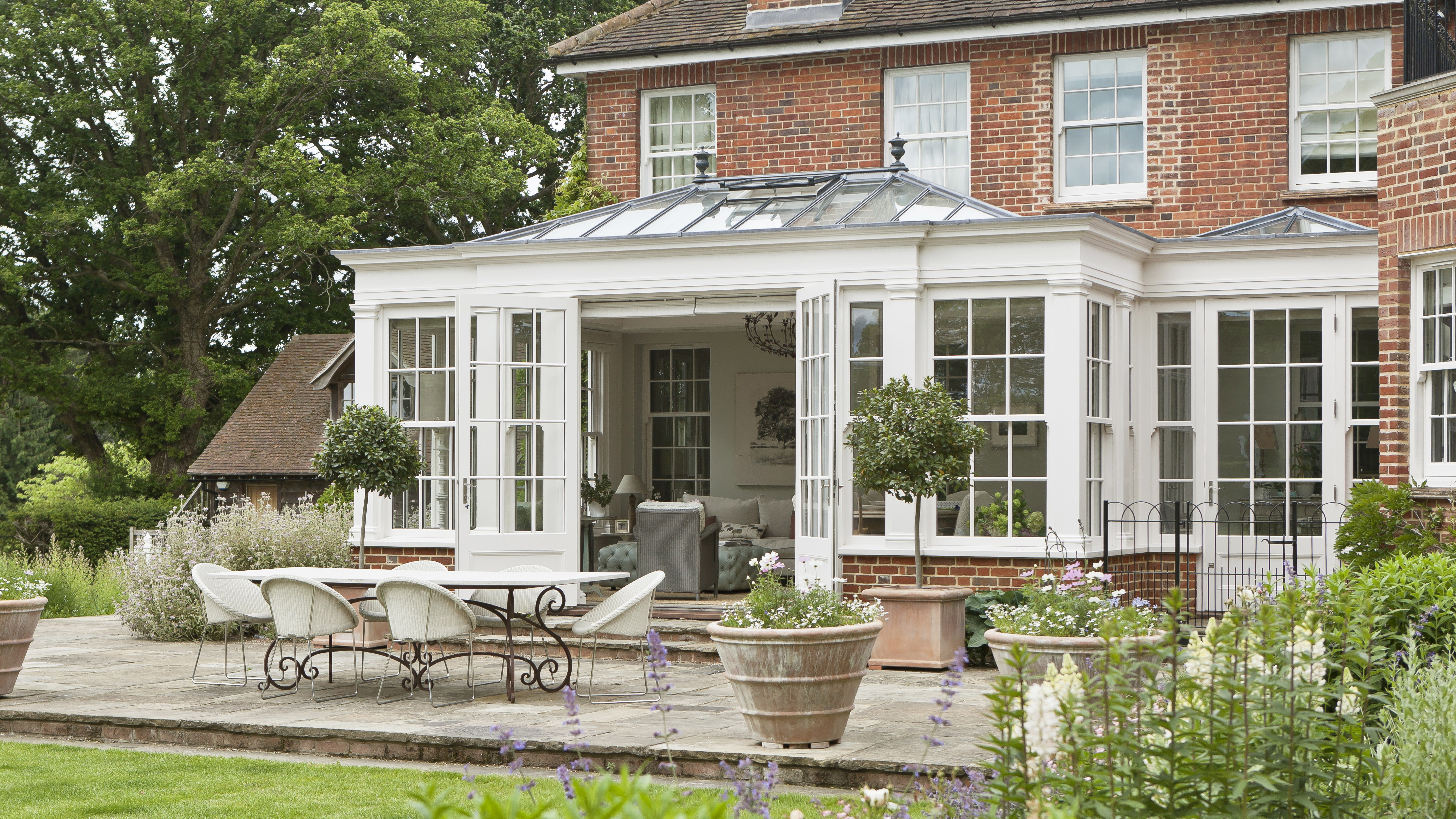
Classic orangery ideas tend to be sympathetic to the existing property, blending in with the look and feel of your home. An orangery is a more substantial building that has less glass and more structured walls. They tend to have a solid roof with a large glazed roof lantern in the centre.
Look at including colours and materials that complement, and pay attention to the overall design and roof style.
“Where possible utilise matching building materials for the base works – reclaim or handmade bricks, stone, flint facings and render, all need to be appropriate to the building and the area in which you reside,” says Lisa Morton, director at Vale Garden Houses.
10. Opt for conservatory frame colours that match your interior preferences
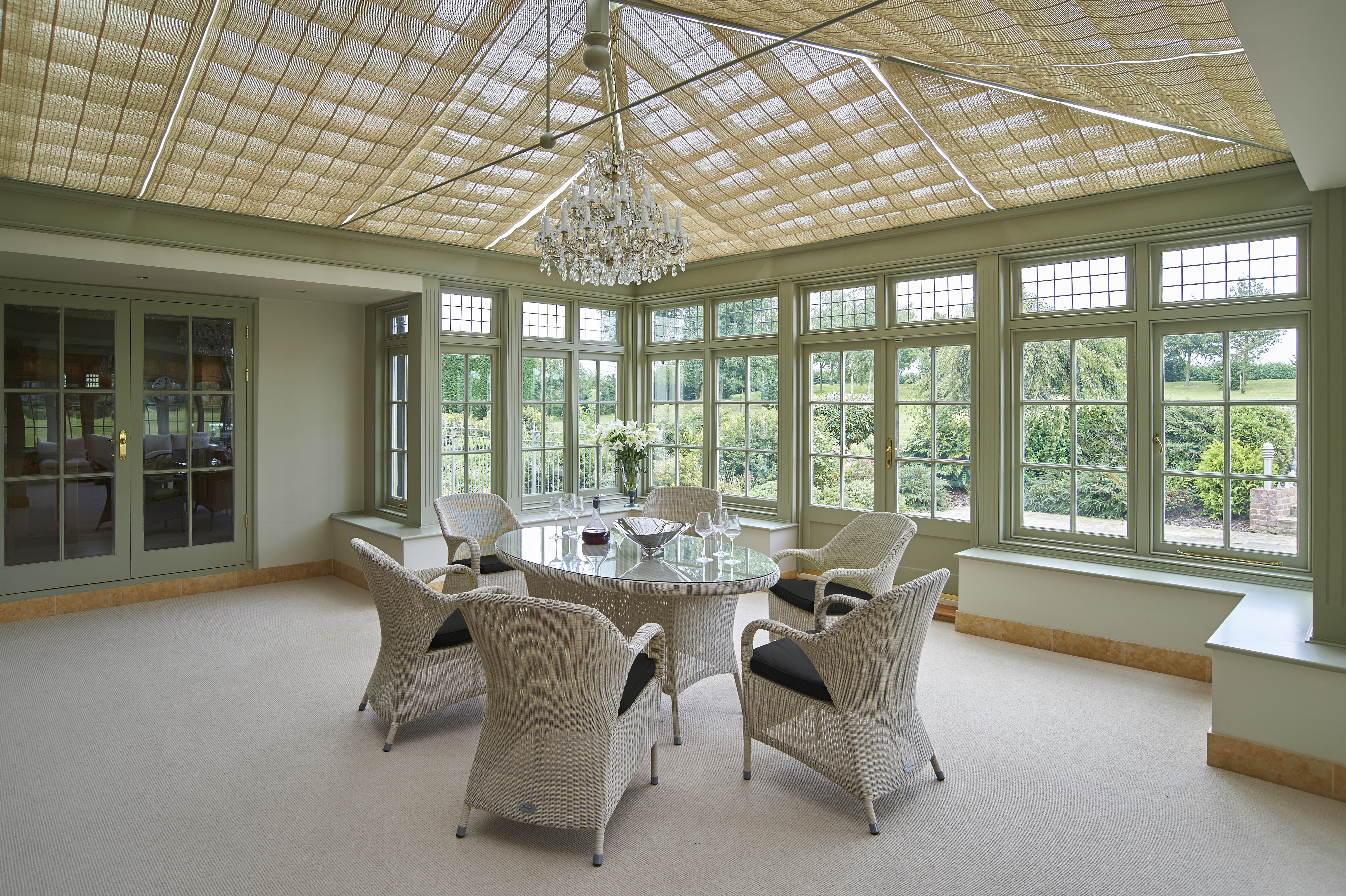
Manufacturers can add colour to your conservatory frame to match your existing home, or to create a striking contrast.
"In terms of colour, earthy tones like soft greens and warm greys are popular," says Karen Bell, "complementing both period and contemporary homes. While classic oak remains timeless, there’s a growing preference for painted finishes that harmonise with the existing architecture of the home."
However, having a colour isn't limited to a wood or aluminium frame. "uPVC is also widely available in an array of colours and finishes and can even be made with wood grain details," says Ryan Schofield, managing director of Thames Valley Window Company.

Ryan is managing director at Thames Valley Windows. He has over 20 years experience, within the glazing industry. TVW is a family owned business, established in 1984 by two brothers, Ryan's dad, Paul Schofield, and Mark Schofield. Ryan took over the business in 2019 when Paul and Mark retired.
11. Connect your indoor and outdoor space with colour, furniture and decor
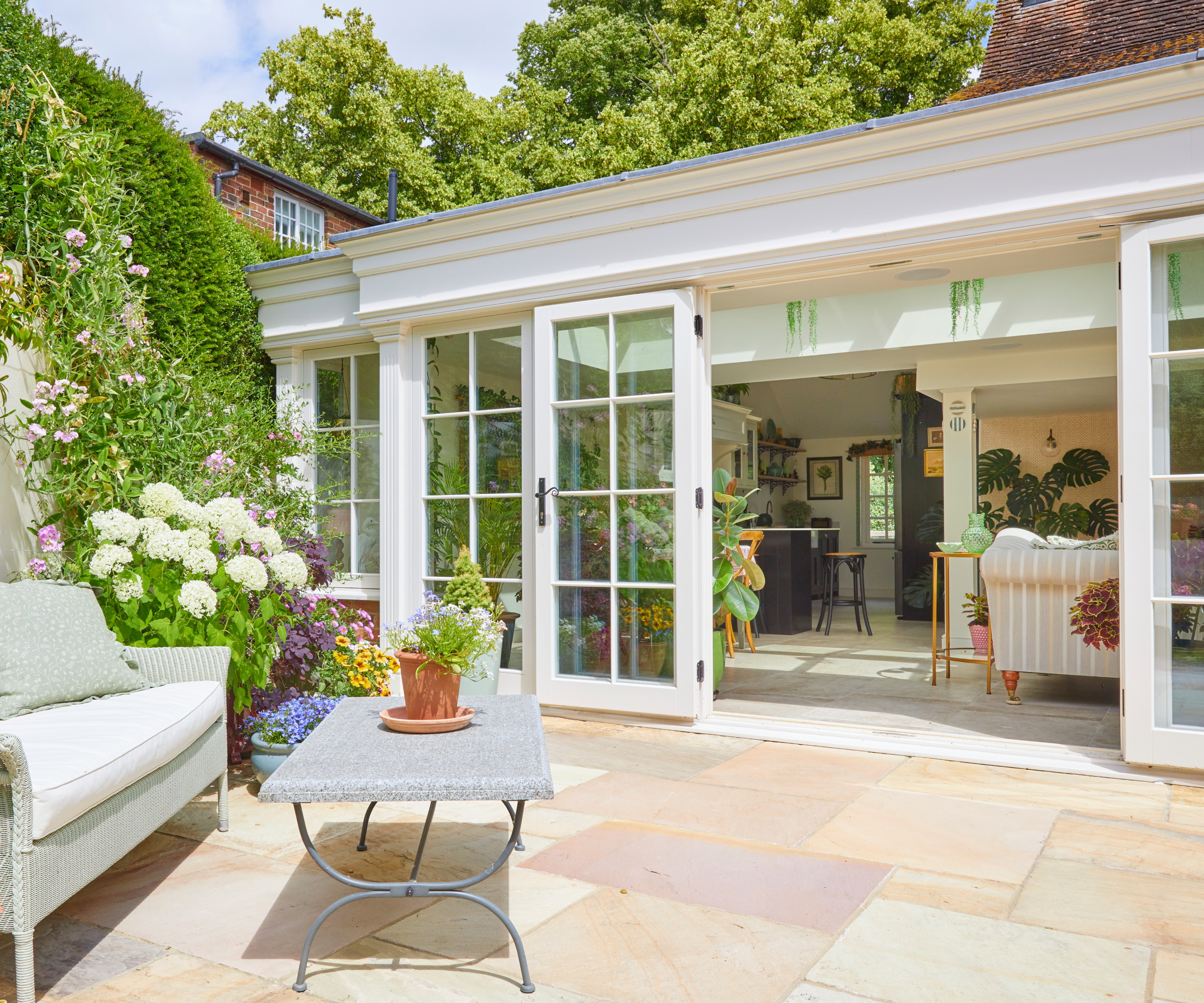
“Finding ways to blend your summer room with your garden is a great way to make the most out of your conservatory over the summer months,” suggests Mark Holloway, founder of Holloways of Ludlow.
“On warm days, add outdoor furniture to your patio or garden to act as an extension of your conservatory space to help improve the flow between the two spaces. You might want to consider adding an outdoor rug to your conservatory over the summer months as a more durable option to truly embrace indoor-outdoor living," he adds.
However, it's also important to make sure you choose the right furniture for each space warns Mark. “While living room furniture can be used in a conservatory, consider the materials of each piece. Conservatories see light and temperature fluctuations, so opting for furniture that can withstand these changes will help to ensure they last longer.
“Cord, rattan, wood and metal are great options as they are resilient and durable yet also help to create the sense of bringing the outdoors in."
This Habitat 7 Seater Rattan Effect Garden Corner Sofa Set from Argos would be a comfy but stylish addition to your conservatory ideas, or be equally at home outdoors.

Holloways of Ludlow has been run by CEO Mark Holloway since 2002 but was founded in 1985 by Holloway’s stepfather Bob Dickinson as Dickinson’s Architectural Antiques with the guiding principle that nothing should be thrown away, but instead salvaged and restored. Holloway has continued in that entrepreneurial vein, gradually and successfully evolving the business into a multi-brand retailer, showcasing a broad range of products that span 20th century iconic pieces to future classics from the finest contemporary suppliers, hand-selected by him.
12. Think beyond a uPVC conservatory
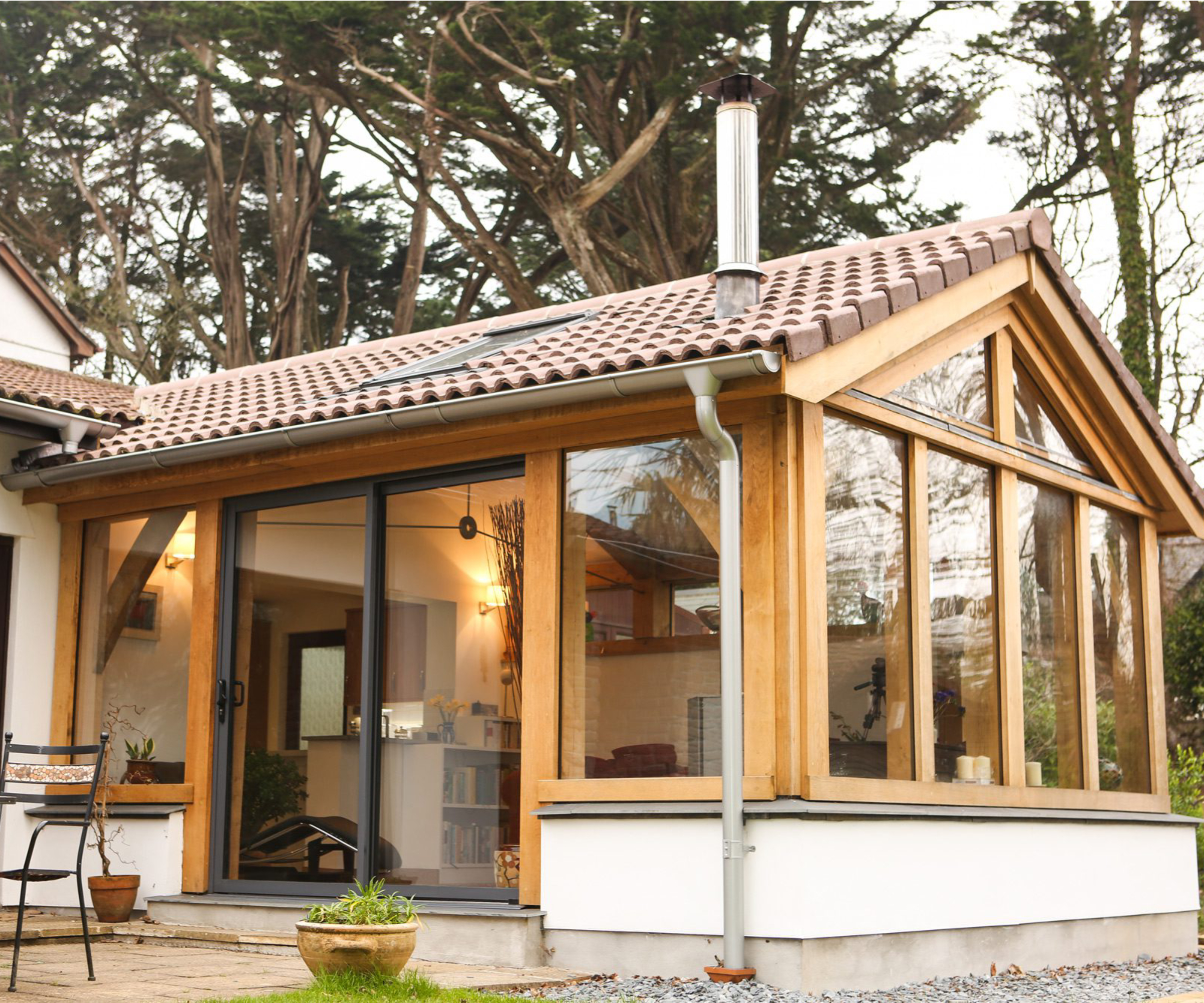
While uPVC is the most cost-effective option for a conservatory's structural material it isn't the most long-lasting of choices. Modified timbers like Accoya or oak frame conservatories provide a characterful and sustainable alternative as well, and although they come with a heftier price tag, are usually worth the investment.
Softwoods like larch or Douglas fir also require more maintenance than a homeowner might want from a larger structure, although could be styled to match a period home with painted timber windows.
Aluminium is a strong contender for the contemporary appearance and uninterrupted views of a uPVC conservatory and has the benefit of being a strong, durable material.
13. Take care when adding a conservatory to a bungalow
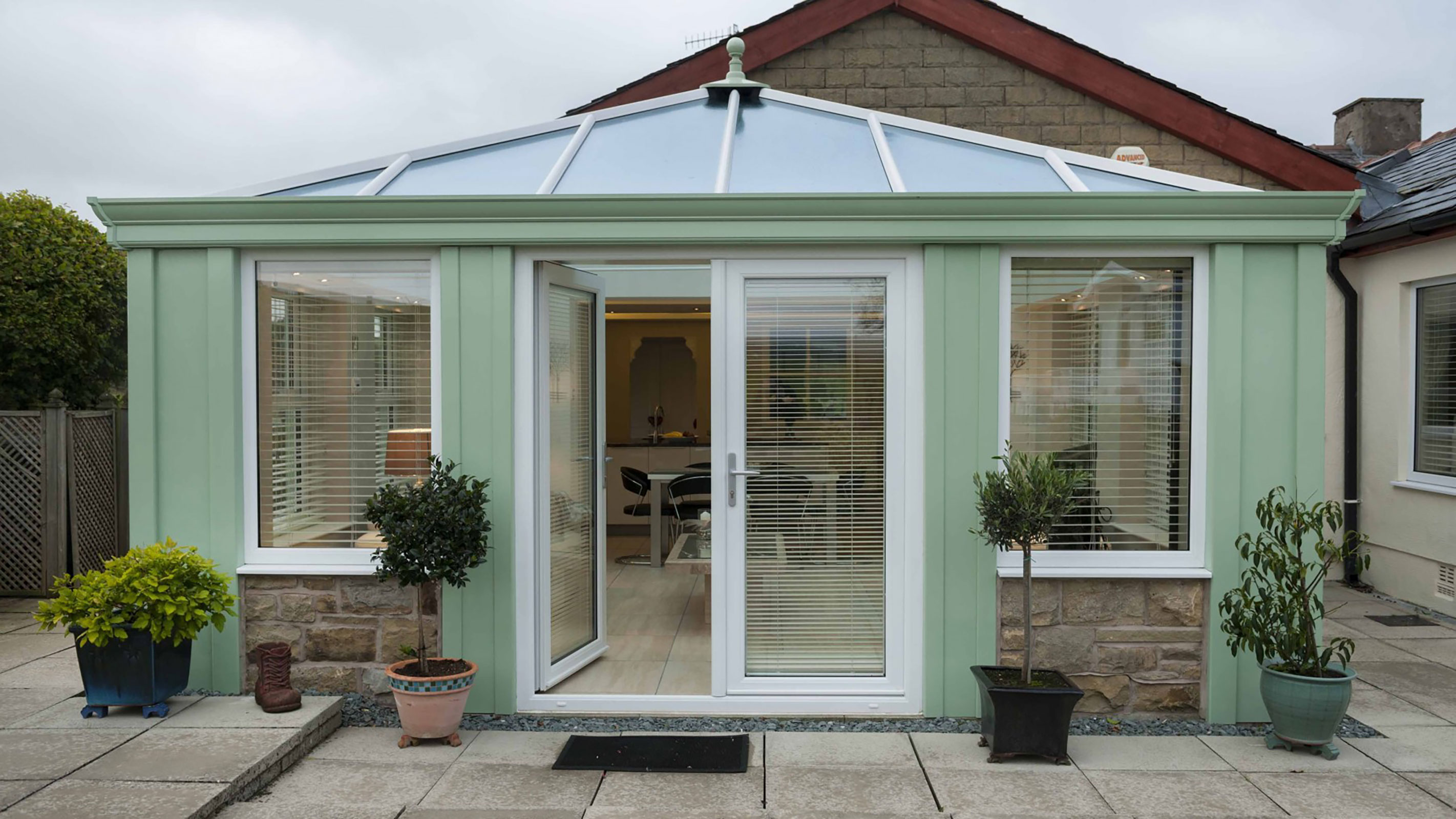
It can be really tricky to get conservatories for bungalows to look right and work well. That said, this is a great way to extend the footprint of a single storey house.
"They’re ideal for bungalows that are limited on space, providing that extra bit of living space," says Ryan Schofield.
"When it comes to bungalows, there are two main styles that work best. The first is to install it on the gable end, which means you can adjoin the conservatory to the pitched roof to ensure the conservatory and roof are at the same height," he explains.
"If a gable end isn’t an option, you can install a box gutter, which allows the conservatory roof to slope backwards towards the bungalow’s guttering, meaning the box gutter would join the property and conservatory together seamlessly – this is a very common option for installing a conservatory on any type of property," he adds.
14. Embrace the biophilic and wellness trend and make your conservatory 'green'
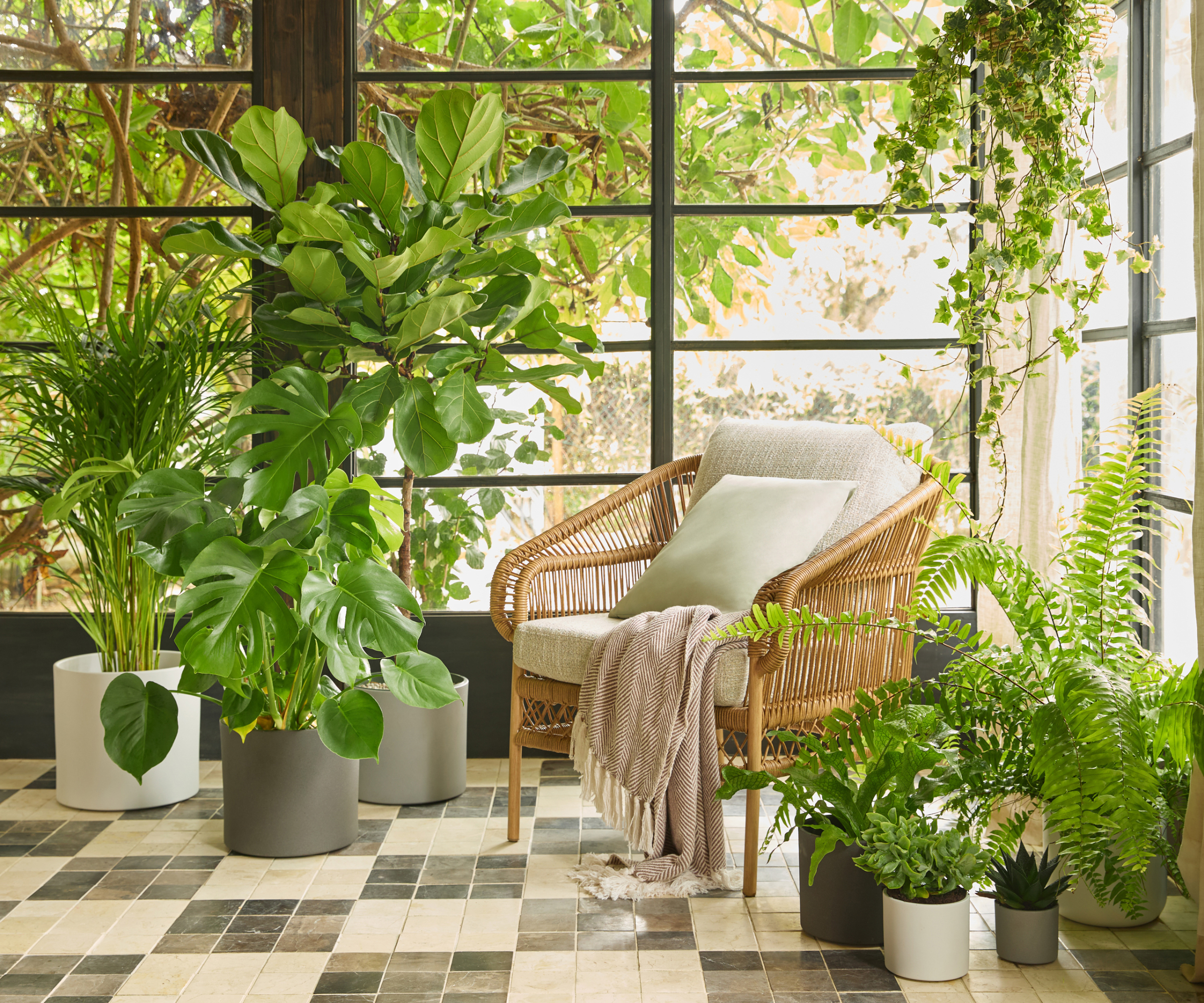
Awareness of how our houses can affect our wellbeing has been steadily growing in recent years. From good home ventilation to spaces that spark a sense of relaxation, there are many ways in which home design can impact our lives beyond the obvious.
Consider adding greenery to a conservatory, creating an oasis away from the hustle and bustle of daily life.
"Due to their access to natural light, conservatories are the perfect place to develop your green fingers," agrees Amy Wilson. "Nurturing real plants will have the added benefit of improving your wellbeing while looking very stylish. Arrange plants in groups and pick stylish and colourful pots that will add some personality to your conservatory.
"Herbs will grow really well in a warm conservatory; in particular, basil planted into inexpensive terracotta pots will thrive and look really appealing. Also opt for green accessories, floor tiles or furniture in this season’s olive shades to compliment the outdoor scenes and set the stage for your plants," she suggests. "Olive is a soft but warm green that will cosy up and bring energy to your conservatory."
You can find a wide range of conservatory plants at Plants For All Seasons.
15. Take a modern approach to conservatory framing
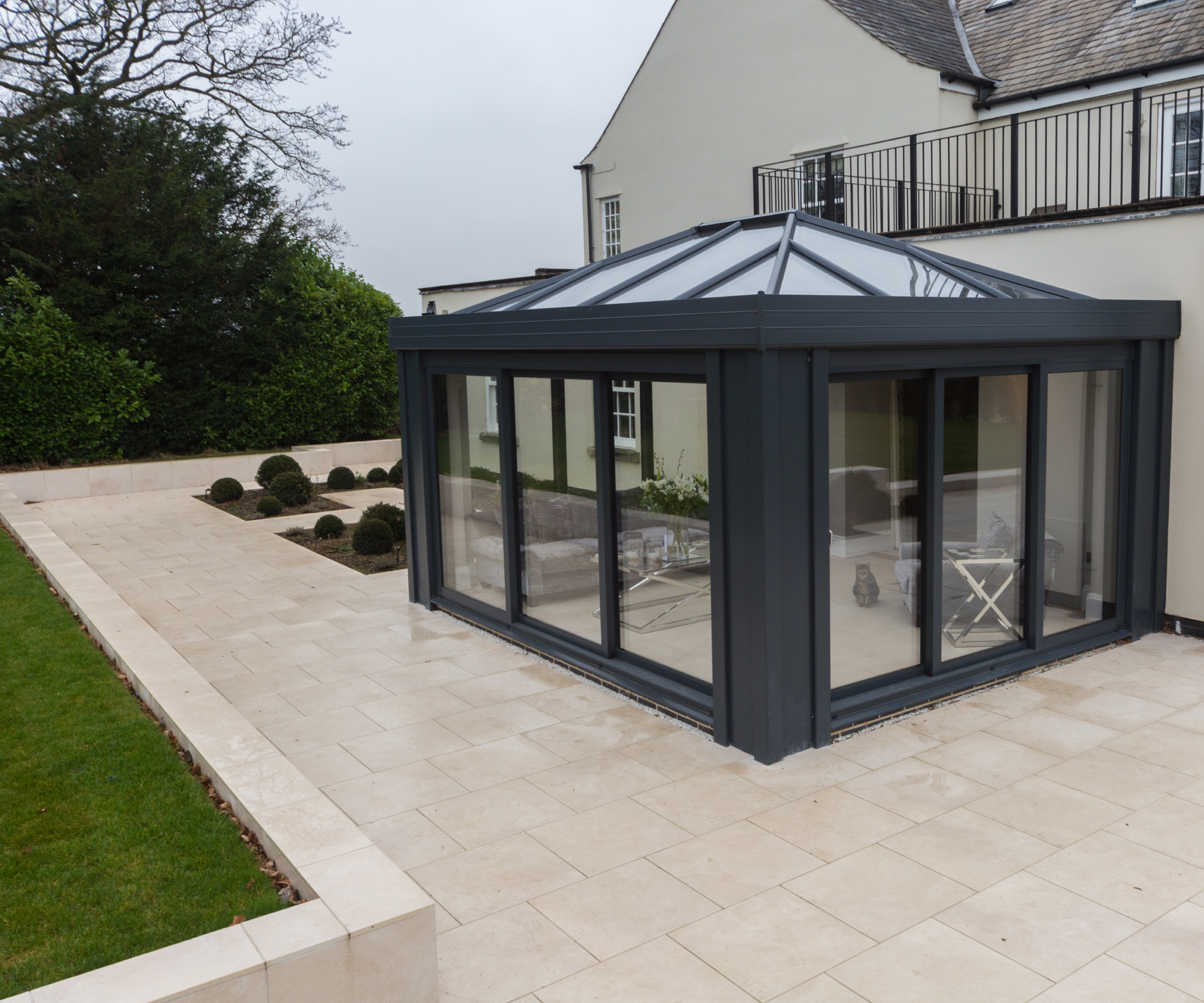
Even if you prefer the more traditional look of an orangery, there's no reason why you can't combine a modern framework with this design approach. As this conservatory design proves, it can also be a more appropriate finish if your home is finished in crisp render rather than brick or stone.
Neatly attached to the side of the house, it provides access onto the modern patio but still has the stature and elegance of a more traditional orangery.
16. Echo architectural elements of the existing house

It is important that the design of your new conservatory doesn't jar with the style, proportions or details of the house is it being added to.
While it is not essential to choose a style of conservatory that matches every part of your home, it is important that some nods to the building it is adjoining should be made. This could be through using the same colours or window styles, including the same materials used for the house in the dwarf wall of the conservatory or, as has been done here, by mirroring the lines of the roof.
The roofline of this conservatory perfectly picks up on the shapes used in the roof of the lovely period property it sits alongside.
17. A glass box extension will give a conservatory like feel
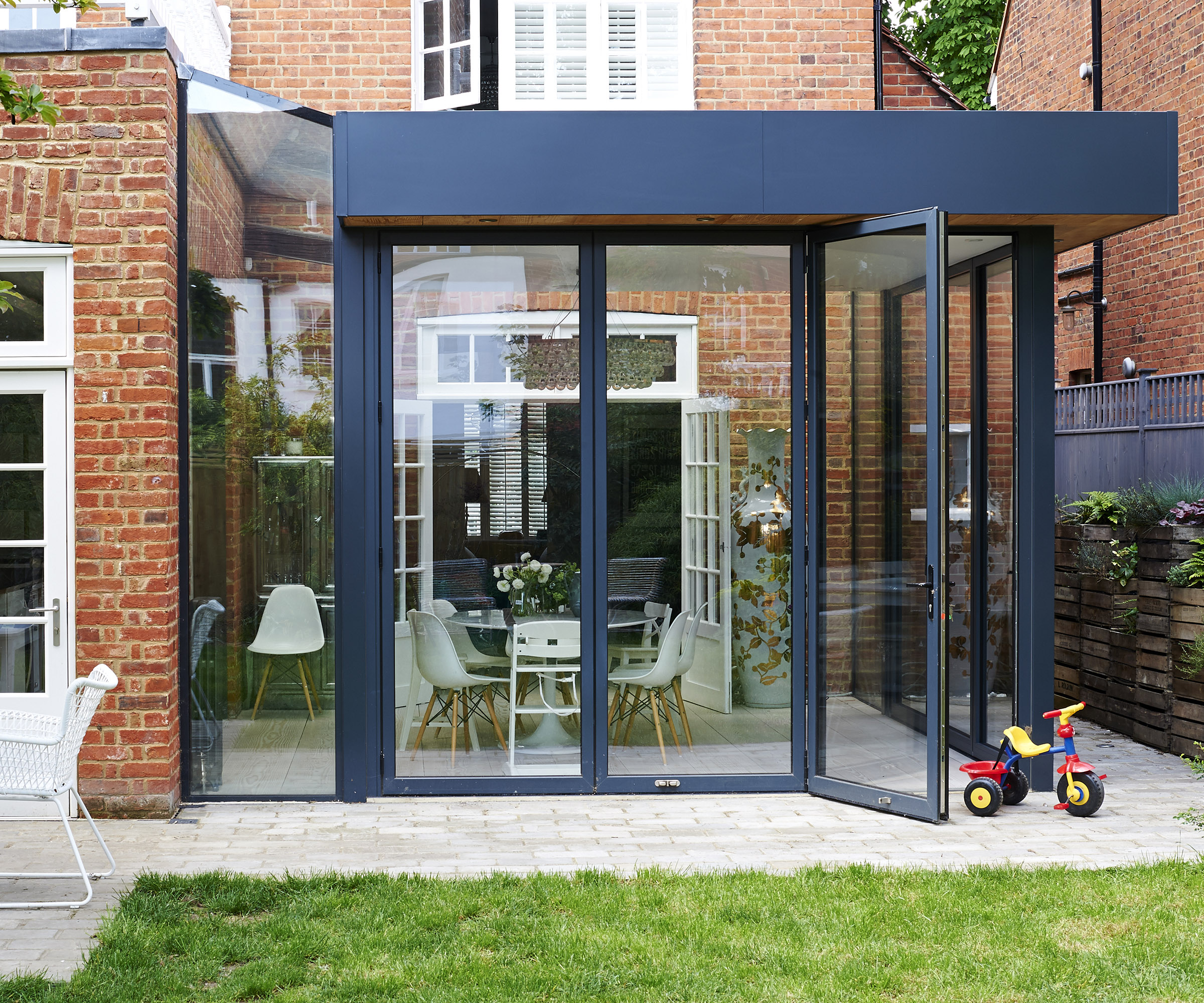
If you're considering replacing a conservatory with an extension, carry over the elements you enjoy most about the space, such as the views out to the garden and a vast amount of light.
Include stylish features such as floor-to-ceiling glass walls which will look stunning from every angle, and bifold or sliding patio doors to retain that connection with the outdoors. And, as this glass extension ideas shows, they can work equally as well with traditional homes as well as contemporary ones.
18. Pay particular attention to your conservatory roof design
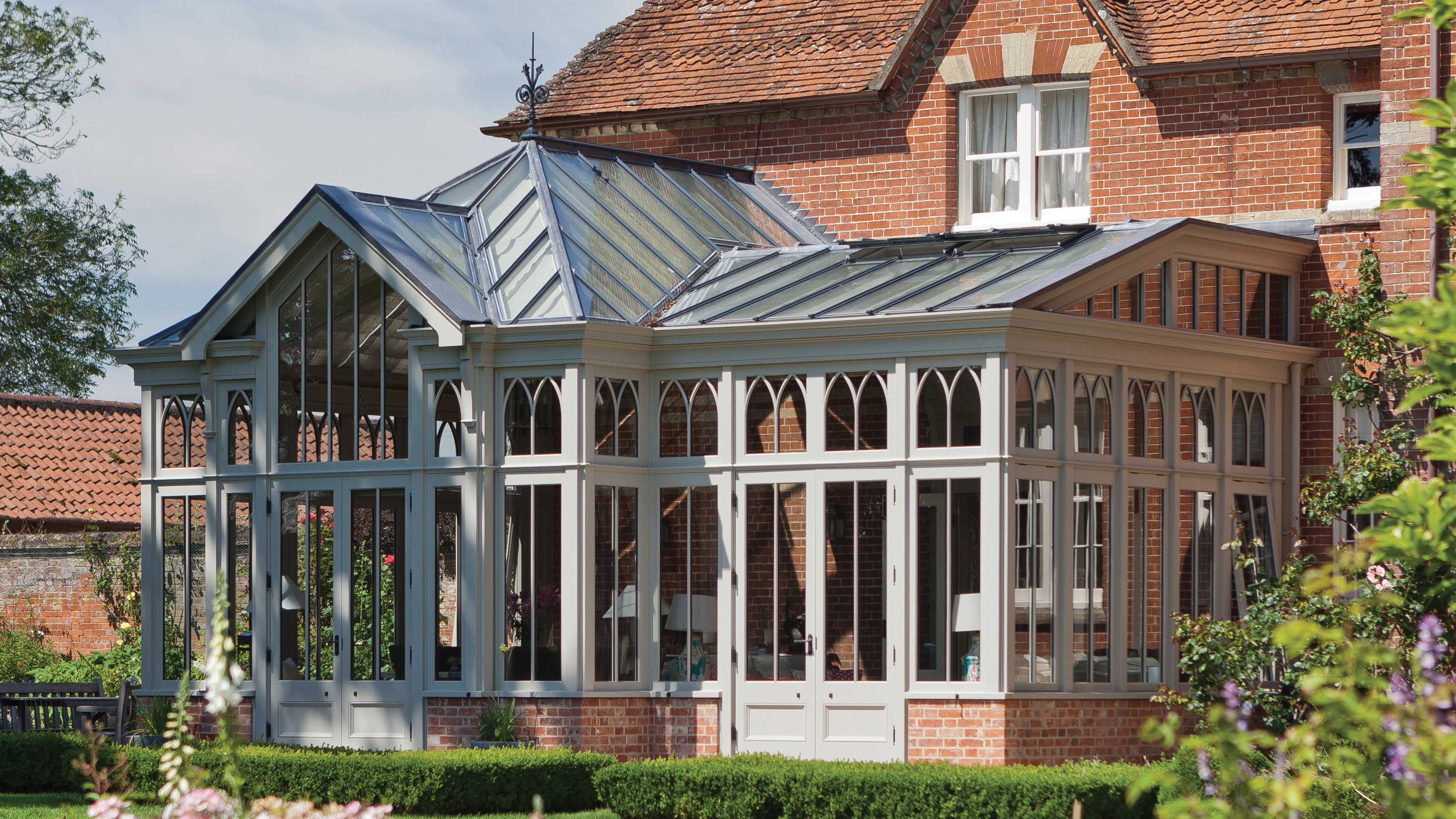
If your conservatory is looking tired or feels cold and unpleasant to inhabit, opt for a conservatory roof replacement to give it a new lease of life.
This could be with a solid roof featuring roof lanterns or roof lights or a fresh design which suits the style of your home more.
Insulating a conservatory roof in this way will create a more welcoming room that doesn't fluctuate in temperature in summer and winter – while reducing energy wastage.
19. Install blinds to keep your conservatory cool in the day and warm at night
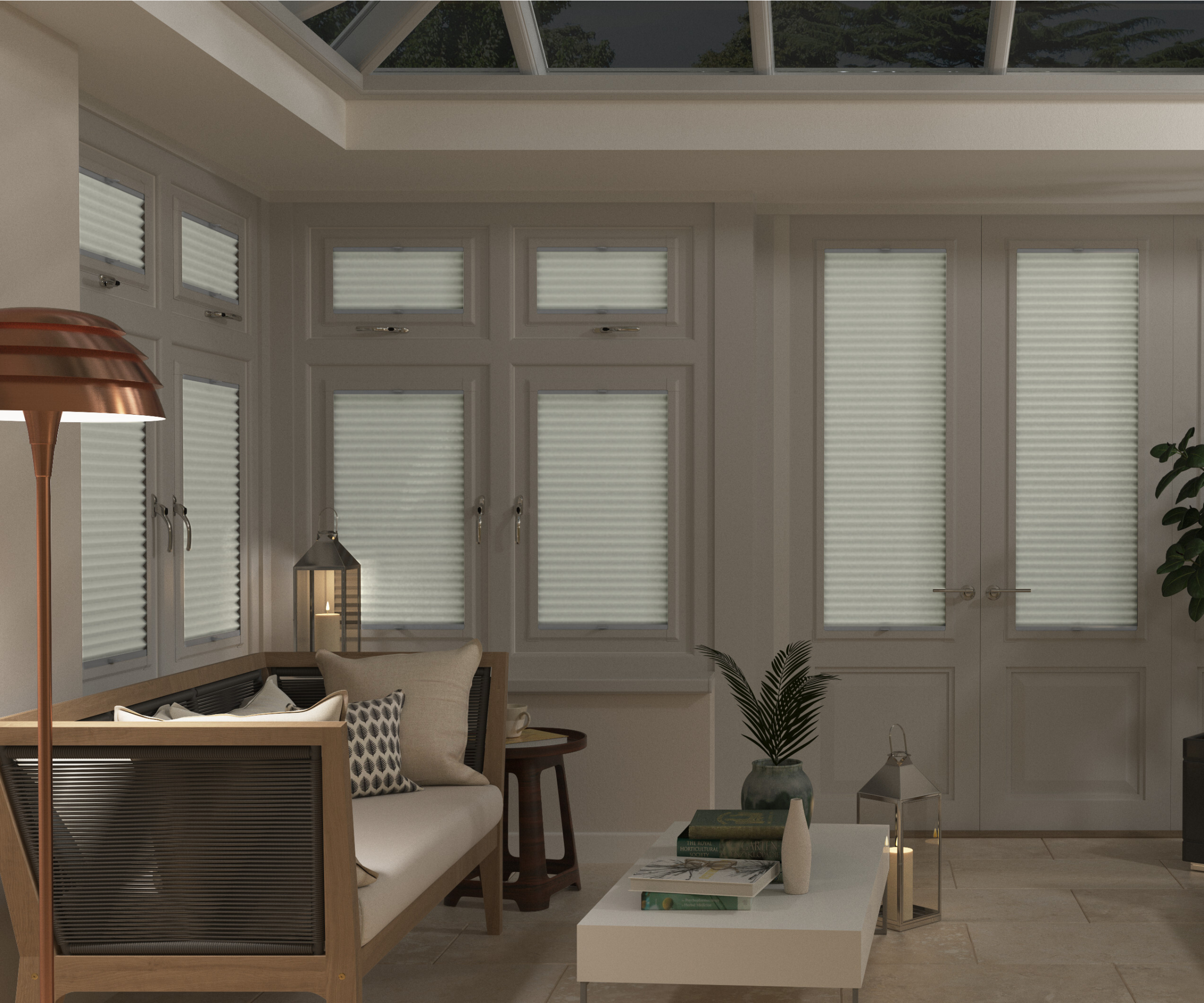
Curtains don't often match the modern appearance of a conservatory and obstruct the views outside, but to make the most of your space, you will want to focus on adding conservatory blind ideas or window films to create shade, as well as privacy.
Electric blinds are a great way to cover a glass ceiling area that is hard to reach, but can become expensive as there will be a lot of glass to cover. You can however get poles to help you manually open roof blinds to keep costs down.
"Choose window dressings which will filter and disperse the light in the daytime," recommends Amy Wilson, like venetians or light-filtering pleated blinds, both available in no-drill varieties, handy for conservatories where surfaces to drill into can be limited."
“Being made almost entirely of glass, maintaining a comfortable temperature in a conservatory can also prove challenging," she adds, particularly in older models where the insulation or glazing might not be quite right.
“Adding thermal or blackout window dressings is an eafsy way to regulate the temperature in your conservatory without replacing the windows, plus it gives you the chance to inject a little flair in the form of colour and texture,' suggests Amy.
"No-drill honeycomb pleated blinds are an excellent choice, made from a clever comb-like fabric which creates an insulative barrier of air at your windows edge, preventing heat loss in winter and blocking out the sun’s rays in summer so you can enjoy your conservatory all year round.”
20. Don't overlook how you will heat your conservatory
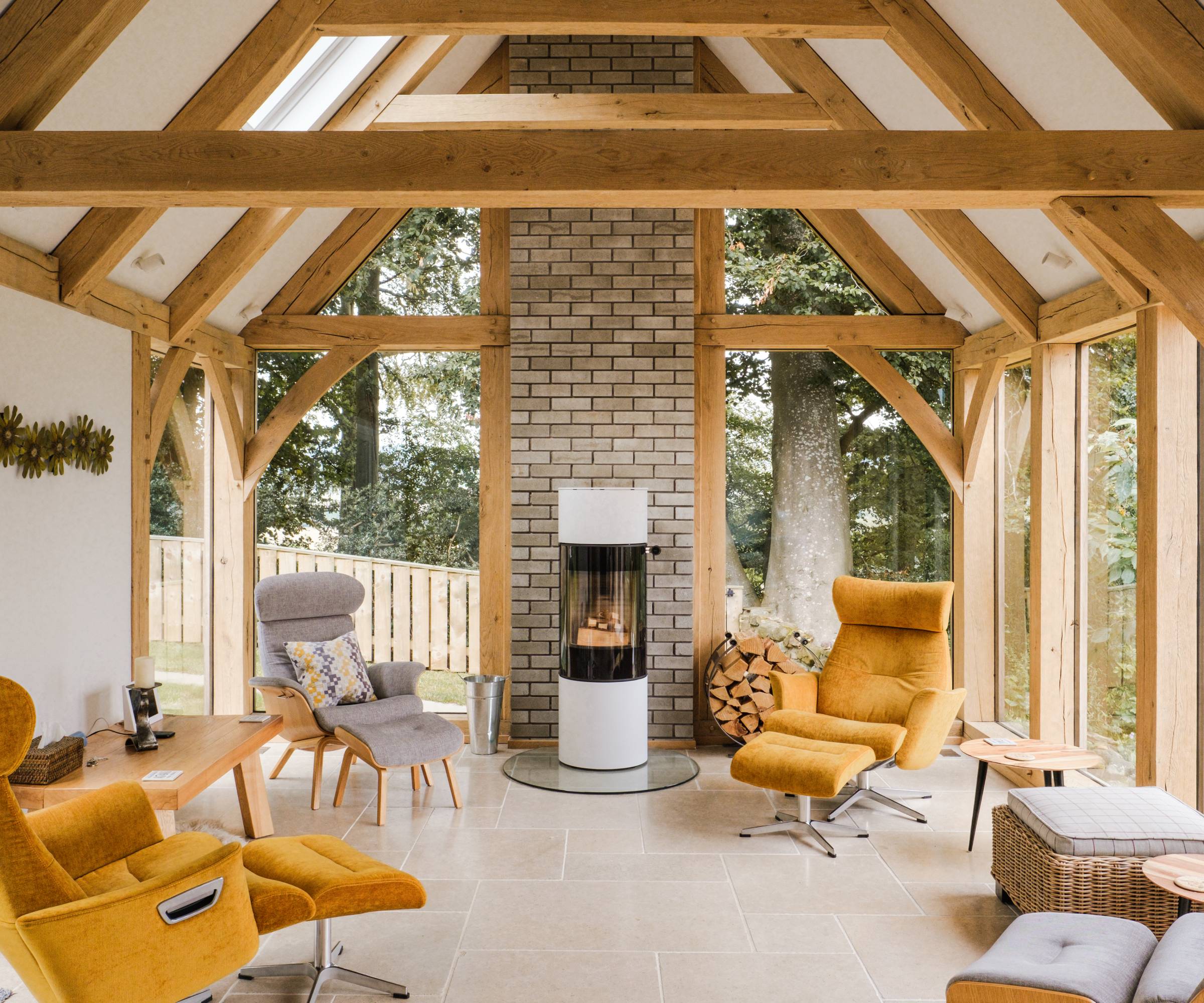
Heating a conservatory might seems counter-productive as so many of us have memories of sweltering summers in a glass box, but as more modern conservatory structures are better insulated, adding a heat source will encourage use during colder winters as well.
Whether it's underfloor heating, a radiator, or a log burning stove, adding a source to stay warm in the winter is a great idea for all glazed structures.
This is especially important to rooms designed to be used in the evenings, such as a living or dining room.
21. Turn your conservatory into a charming dining room
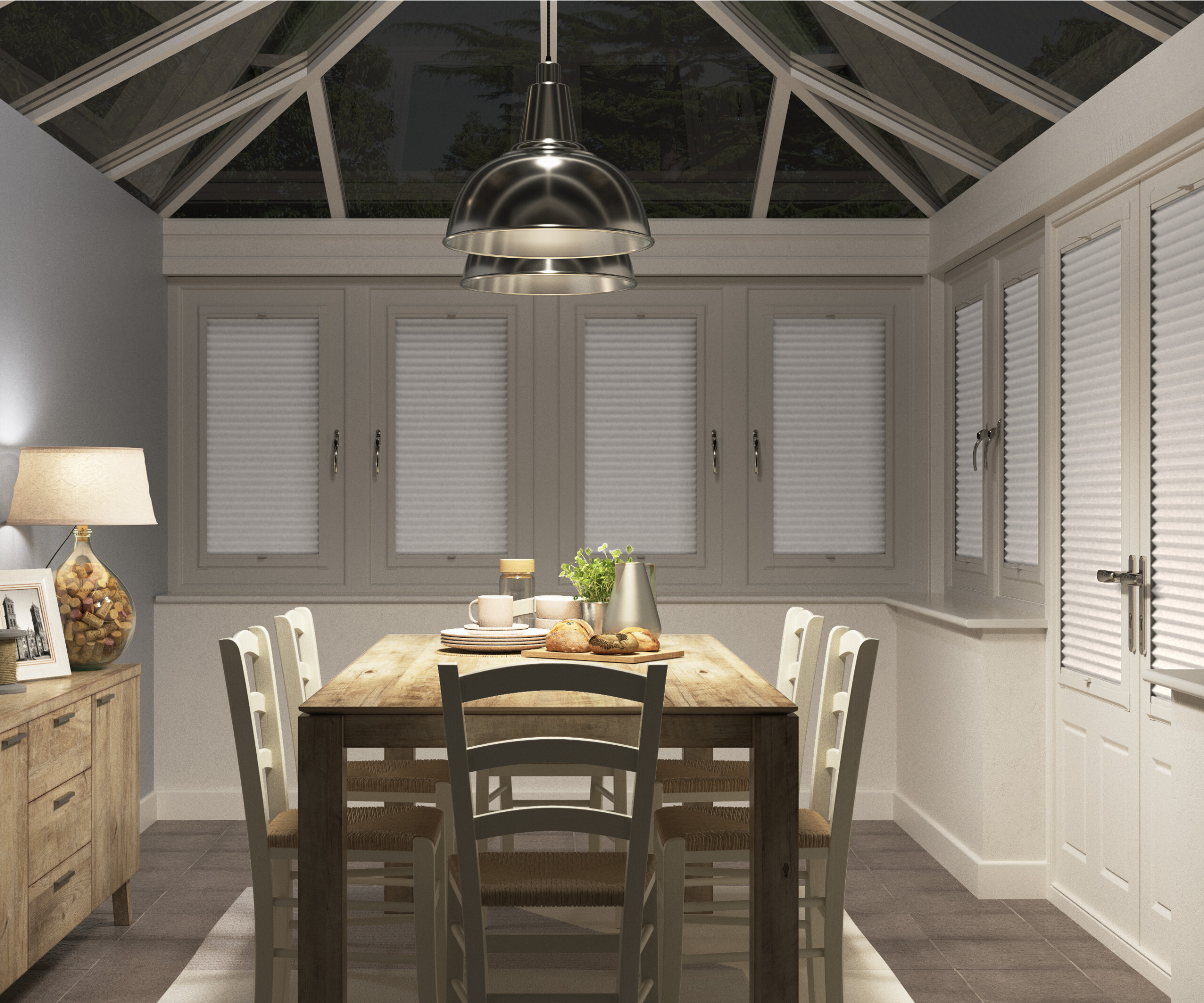
Searching for dining room ideas? Come rain or shine, experience the joys of eating outside with getting soggy by using a conservatory as a dining room.
Elegant and effortlessly stylish, this modern dining room feels light and bright for a morning brunch, while the wired pendant lights means the space is ready for dazzling during the evening.
And, if your conservatory is large enough, consider creating zones to define the different uses, says Mark Holloway.
“For example, add an overhead light to a lounge corner to make the space work for relaxing or reading. Or, if you’ve got space to incorporate a dining area, consider placing this on top of a rug to help define this space and separate it from the rest of your space."
22. Ensure your conservatory doesn't overheat with an exposed glazed roof
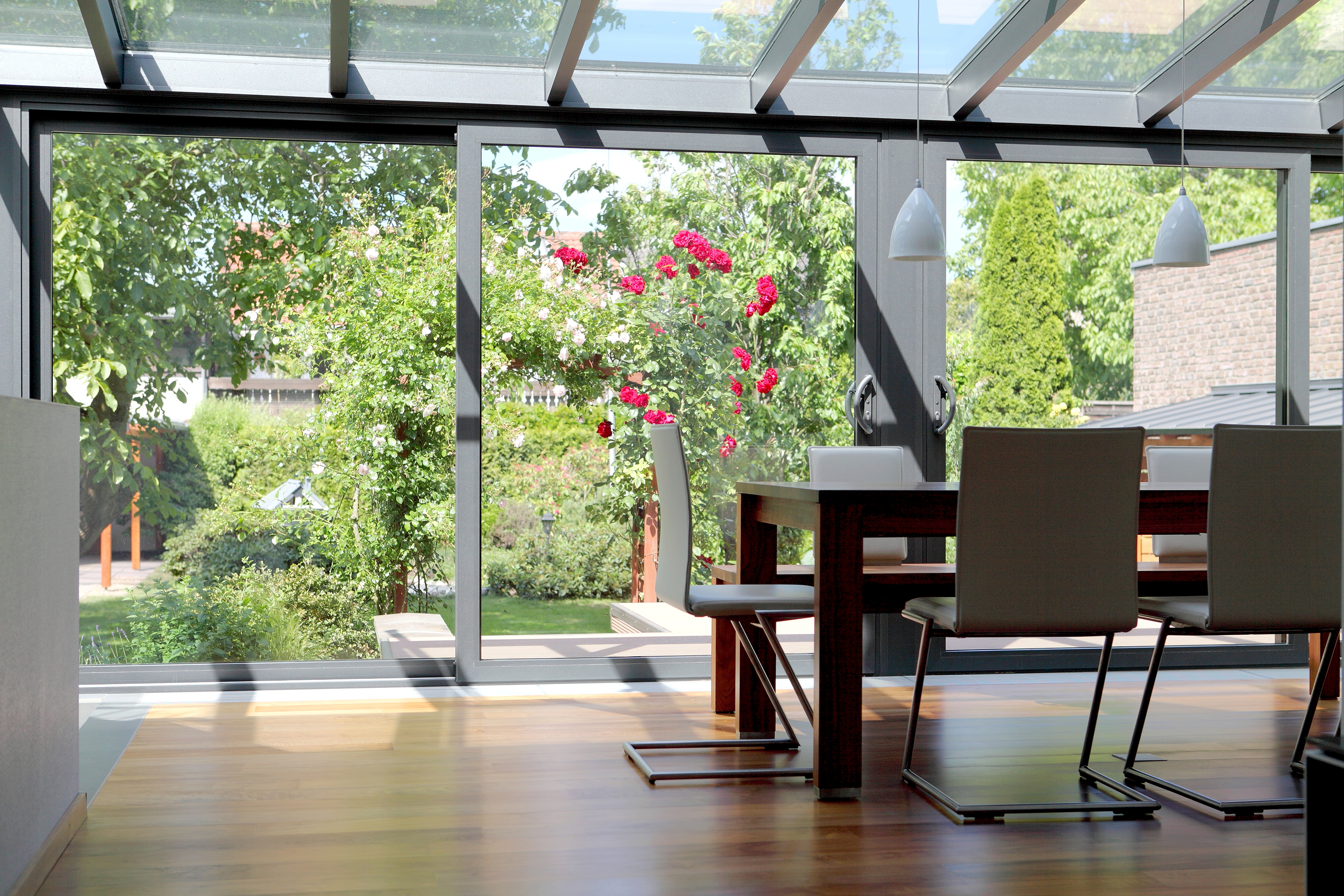
With such large amounts of glazing, it's no wonder old conservatories can be unusable in the height of summer. However, taking this into consideration when designing or upgrading a conservatory is essential for a modern space.
Looking for glazing which has a special coating is one way to combat overheating, while retrofitting solar control window films is a cost-effective option for existing spaces.
23. Use the right lighting to bring the space to life
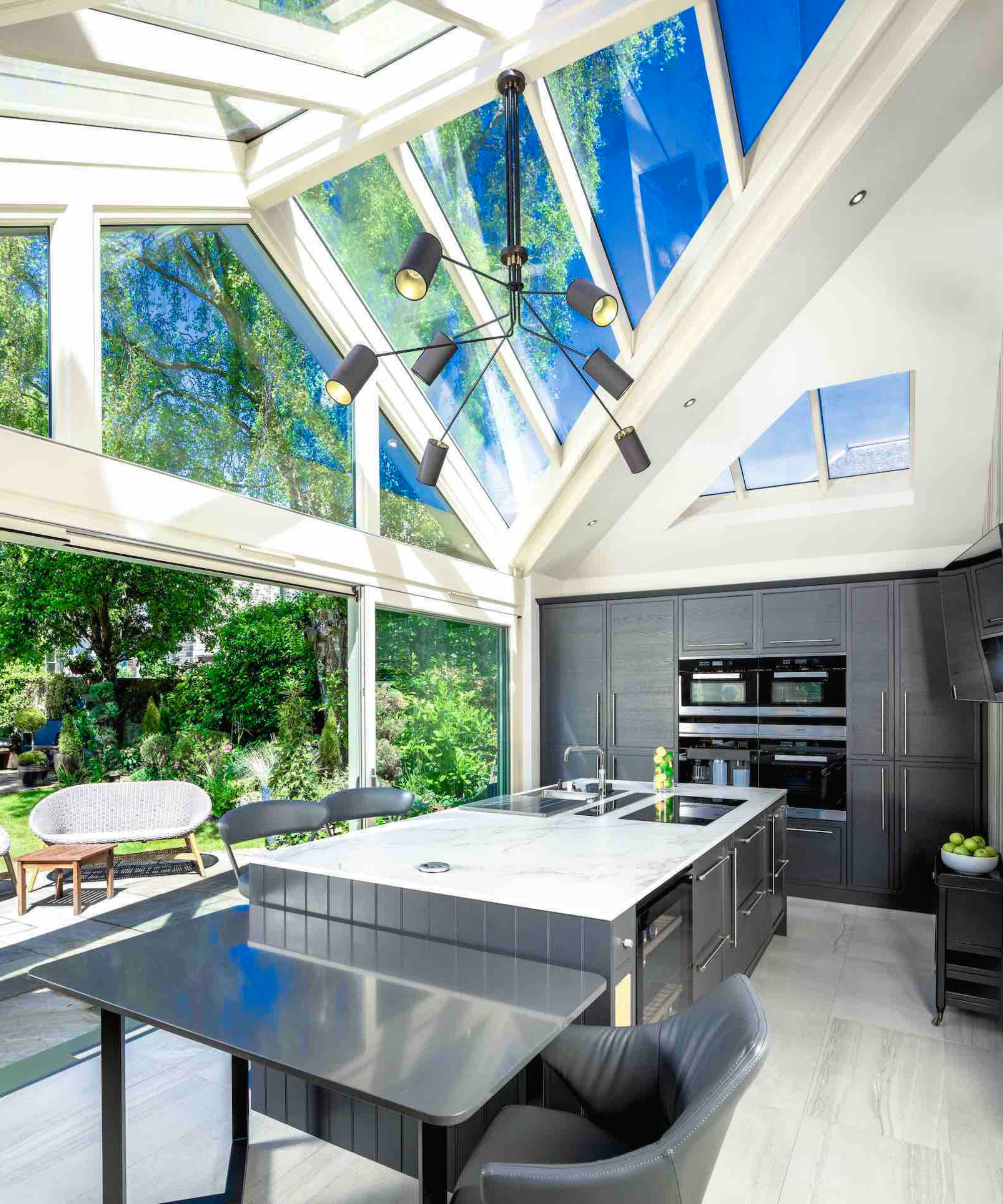
Although conservatories and orangeries will be flooded with natural light during the day, they can become dark and uninviting at night, so it pays to consider your artificial sources of illumination – and this is where conservatory lighting ideas come into play.
One of the most common lighting design mistakes is not layering your lights and it's no different with your conservatory ideas. Make sure you have a combination of, or all of the following:
- Wall lights, when well placed will twinkle against the glass
- Table lights will create a relaxing, warm glow
- Built-in, discreet spotlights can add directional lighting along walls and are especially suited to orangeries and glazed extensions
- LED strip floor lighting is also a good choice along any steps or split level areas
- Light your garden with outdoor lights to create something that glows beyond the glass
24. Add instant elegance with a traditional conservatory
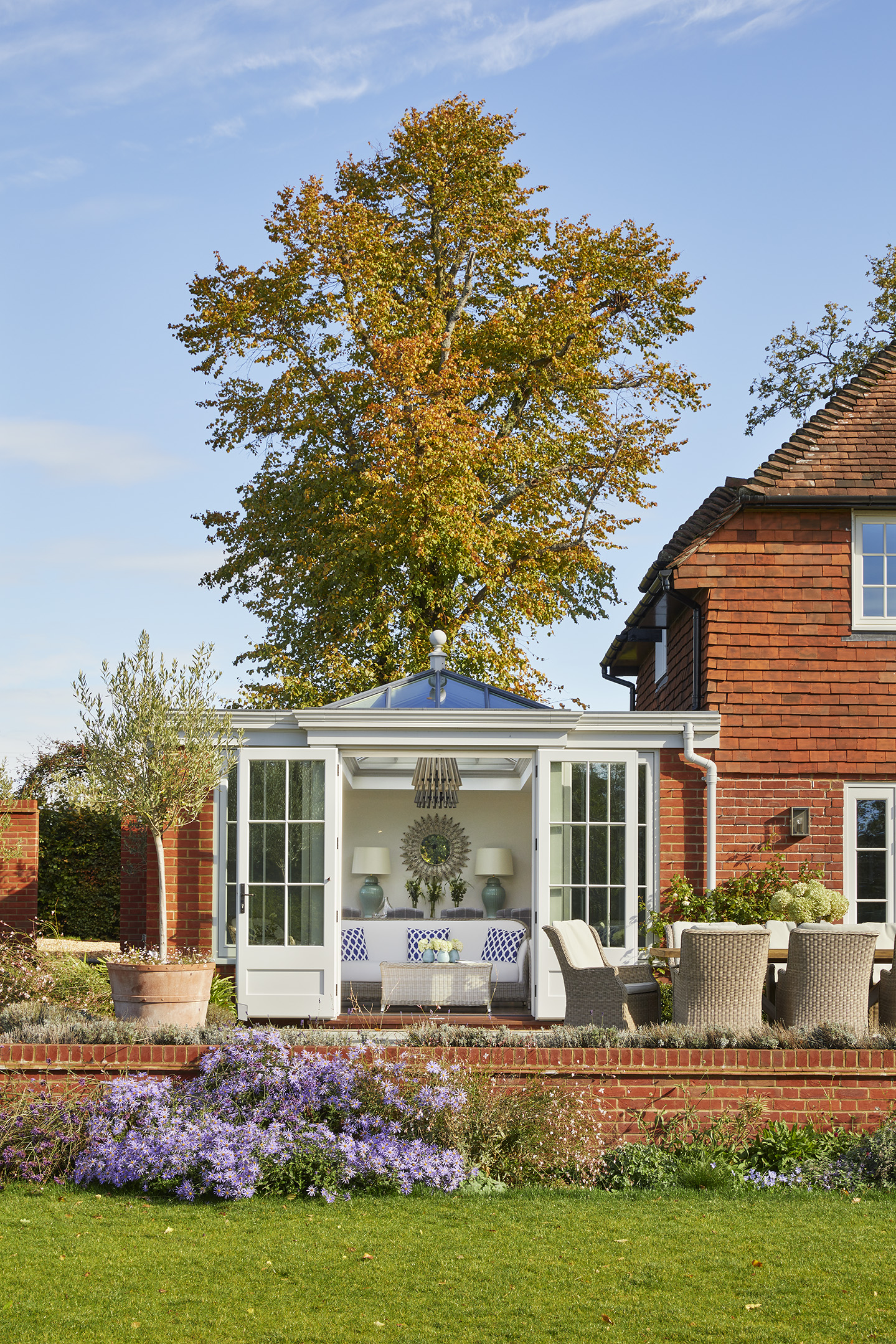
For something architecturally striking, an Edwardian-style conservatory often has a square shape and large glass panels, which gives a timeless yet stylish look.
Victorian-style conservatories, on the other hand, are elegant and spacious and feature a rounded bay frontage that allows for panoramic views of the garden.
Gothic and Victorian style conservatories often have a steeply pitched roof and ornate detailing. Choosing this style is an effective way to add an eye-catching design feature that suits period properties.
25. Get the positioning of your conservatory spot on
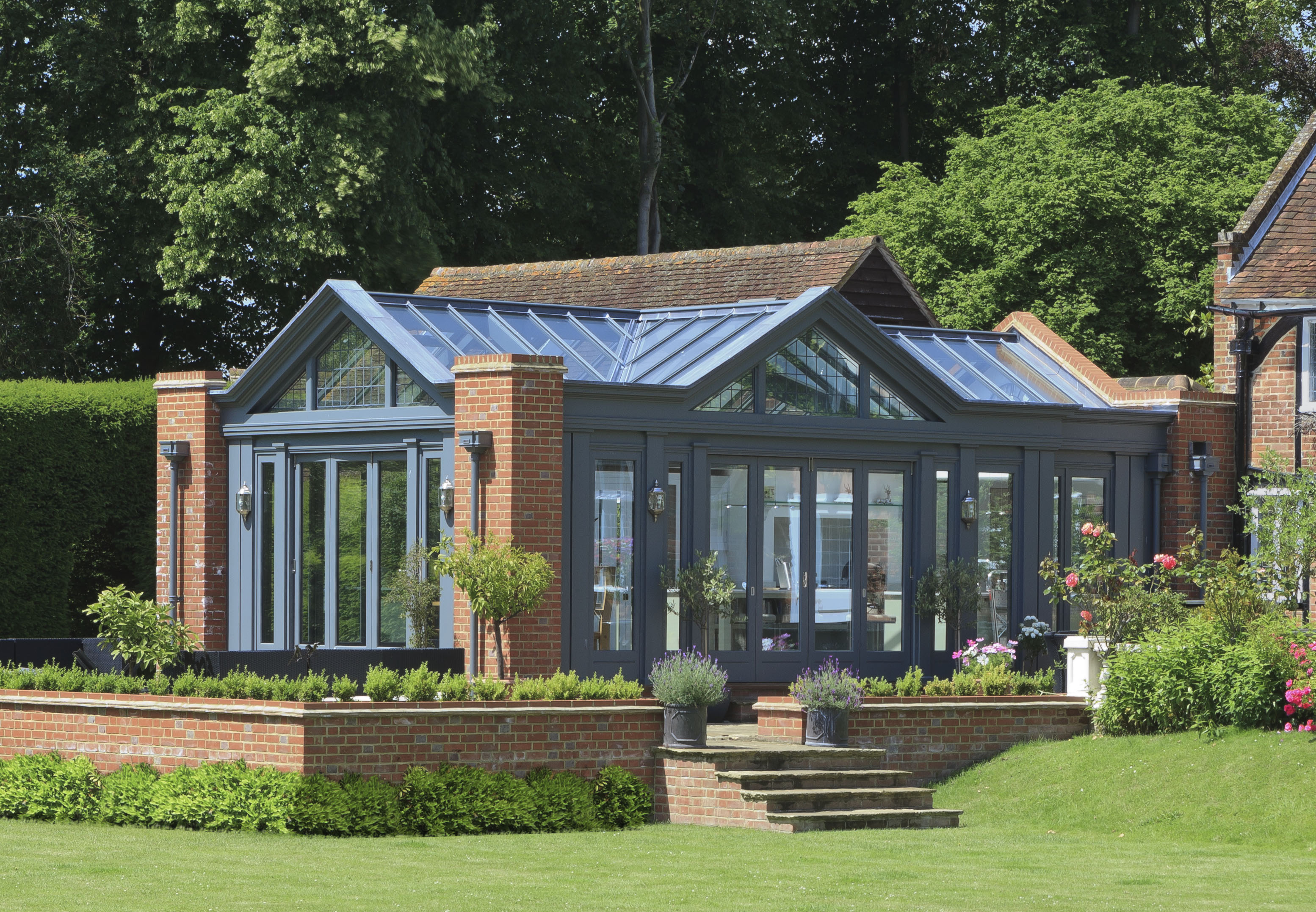
Think about how and when a new conservatory will be used before deciding on its location. A south-east direction will make the most of morning rays while south-westerly orientations will capture sunset views, for instance.
Think too about where will be the best spot to enter your conservatory internally – it might be necessary to consider your new addition as part of a wider remodelling project.
26. Leave your home's walls exposed in your new conservatory idea
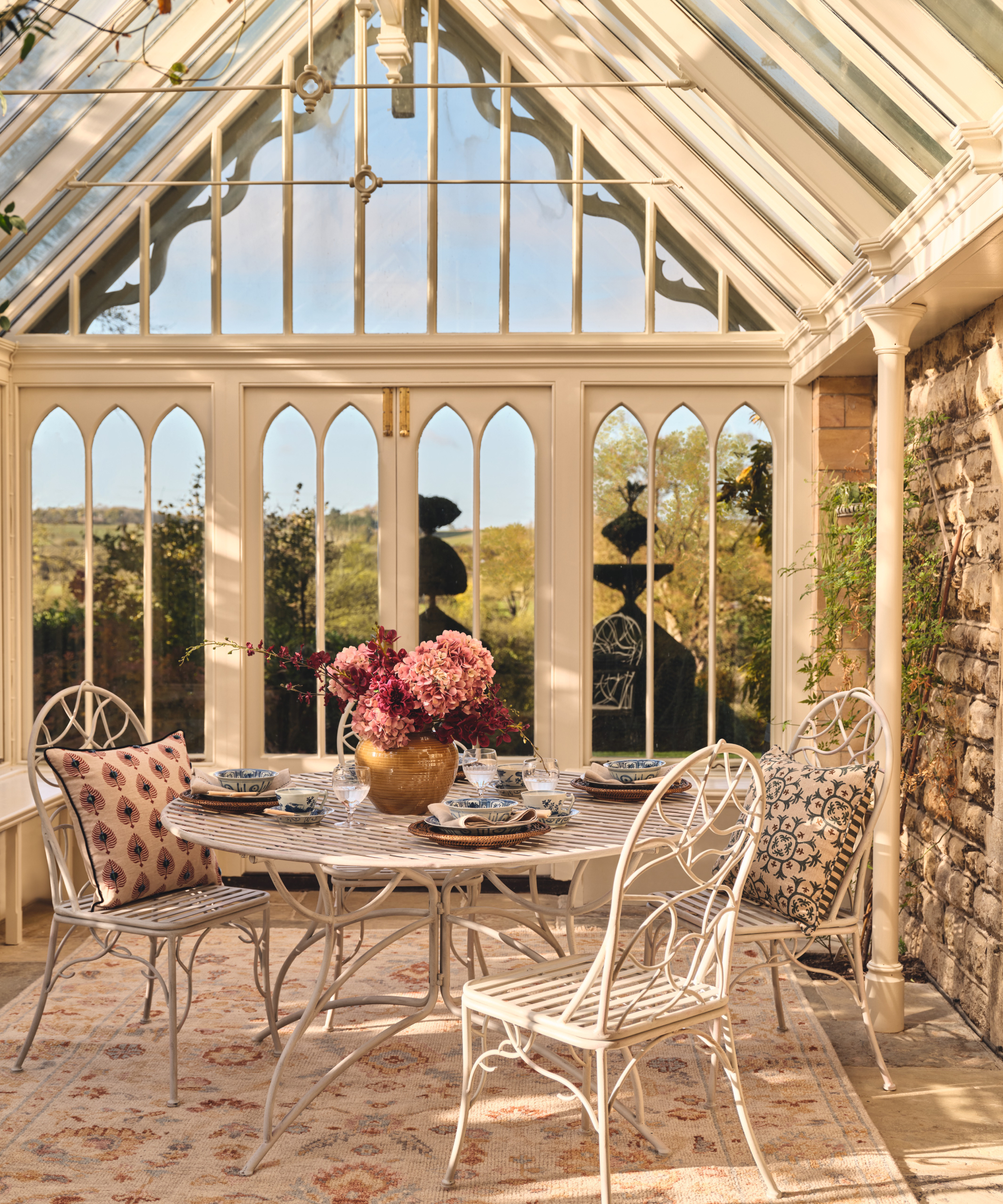
While it may be tempting, or even necessary to cover up the external walls of your home when adding a conservatory, in some instances, such as this one, leaving them exposed can actually be a far better option.
Perfectly in keeping with the traditional and ornate design of this conservatory idea, the stone walls add character and style to this cosy dining space.
Keen to make sure you get your final conservatory design right? Mark suggests the following.
"We always recommend approaching your conservatory room design the same as you would for any other room, especially if you want to use your space all year round," he says.
“Map out where larger pieces of furniture such as sofas, armchairs and dining tables will be placed and then work around this. This will help you make the most out of your space, without overcrowding it. Once these are in place, add in lighting, coffee tables, lamps and details such as artwork or mirrors to help the room work for both relaxing and socialising."
Also be sure to avoid these conservatory pitfalls so that your conservatory doesn't turn into a disaster zone.
Get the Homebuilding & Renovating Newsletter
Bring your dream home to life with expert advice, how to guides and design inspiration. Sign up for our newsletter and get two free tickets to a Homebuilding & Renovating Show near you.
Amy is an interiors and renovation journalist. She is the former Assistant Editor of Homebuilding & Renovating, where she worked between 2018 and 2023. She has also been an editor for Independent Advisor, where she looked after homes content, including topics such as solar panels.
She has an interest in sustainable building methods and always has her eye on the latest design ideas. Amy has also interviewed countless self builders, renovators and extenders about their experiences.
She has renovated a mid-century home, together with her partner, on a DIY basis, undertaking tasks from fitting a kitchen to laying flooring. She is currently embarking on an energy-efficient overhaul of a 1800s cottage in Somerset.

